Transforming your dining room into a transitional space can create a harmonious balance between classic charm and modern elegance. Whether you're remodeling or refreshing, the versatility of transitional design can help you achieve a timeless yet contemporary atmosphere that’s both inviting and functional. From sleek furniture to the perfect color schemes, these 25 transitional dining room ideas will inspire your design journey, offering practical advice for every style preference. Embrace the versatility and warmth of this design philosophy and discover how to blend comfort with sophistication in your space.
1. Embrace Neutral Tones for a Calming Vibe
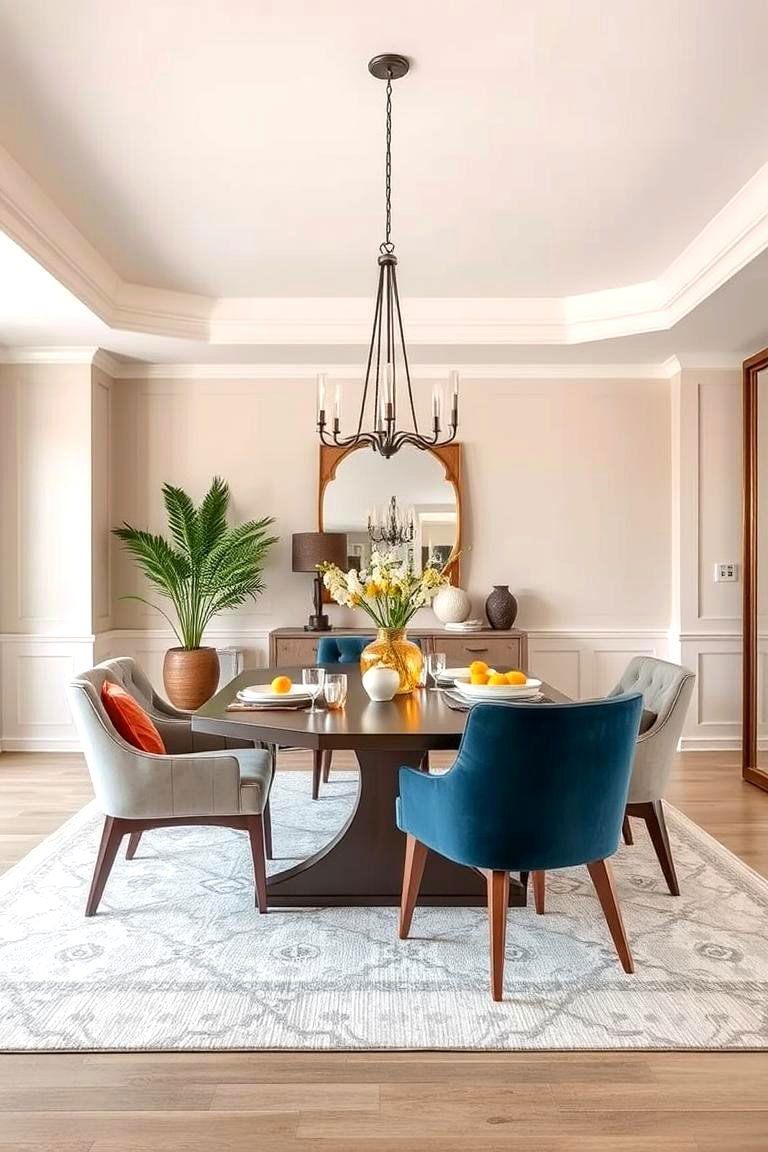
A neutral color palette serves as the foundation of any transitional dining room, creating a serene and cohesive space. Soft hues like beige, taupe, and gray offer a calming backdrop, allowing your furniture and accessories to shine. This simple, elegant approach ensures the room feels spacious and relaxed while providing ample opportunity for pops of color through artwork, textiles, or floral arrangements. By focusing on neutrals, you allow the natural beauty of the dining space to stand out without overwhelming the senses.
2. Incorporate Warm Wood Elements for Depth
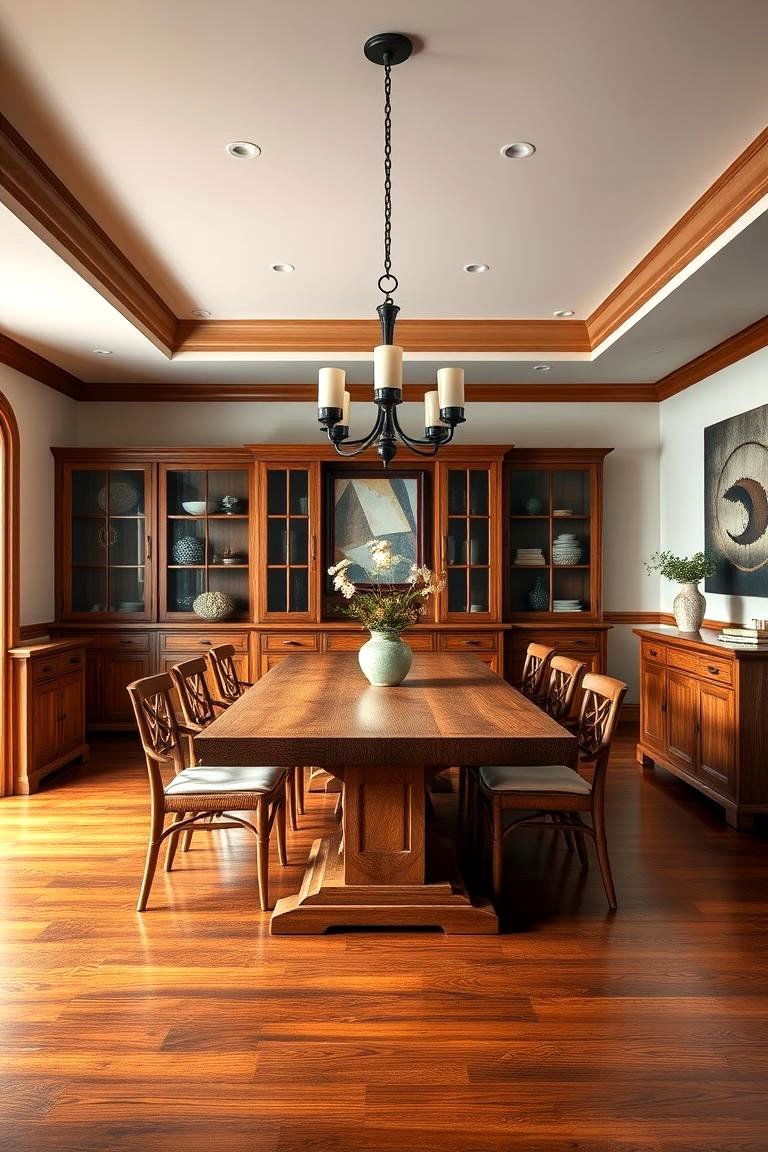
Wood is a classic material that seamlessly fits into a transitional dining room. Whether it’s a sturdy oak dining table or rich wooden flooring, these pieces add texture and warmth to your space. Opt for darker wood tones if you want to evoke a traditional feel, or lighter finishes for a more contemporary edge. By incorporating wood elements, you can create a timeless, grounded atmosphere that still feels fresh and inviting. These additions help strike the right balance between old and new, keeping the design both functional and beautiful.
3. Focus on Simple, Sleek Furniture
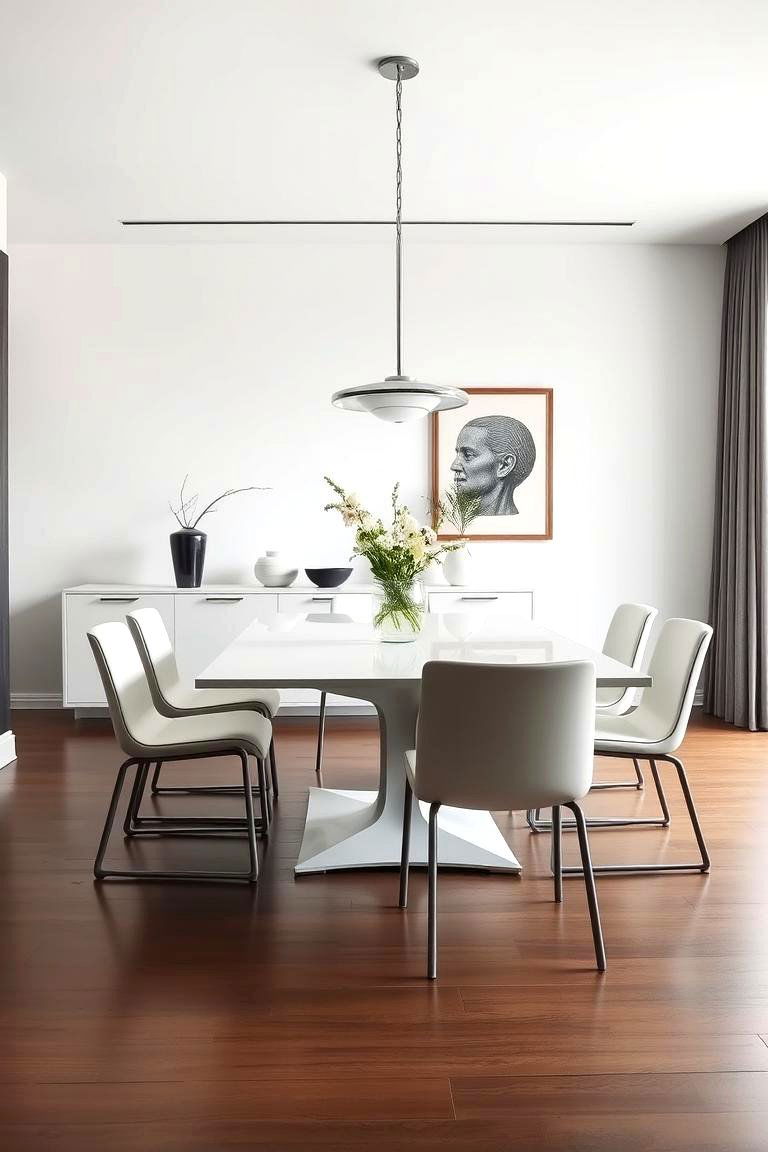
In a transitional dining room, less is often more when it comes to furniture. Choose sleek, well-crafted pieces that combine practicality with style. A streamlined dining table and minimalist chairs create a balanced, uncluttered look. Look for designs that have clean lines and simple finishes, without too much ornamentation. These types of furniture bring a modern touch while maintaining the comfort and familiarity associated with traditional dining spaces. The key is finding pieces that complement both ends of the design spectrum for a cohesive look.
4. Blend Traditional and Modern Lighting Fixtures
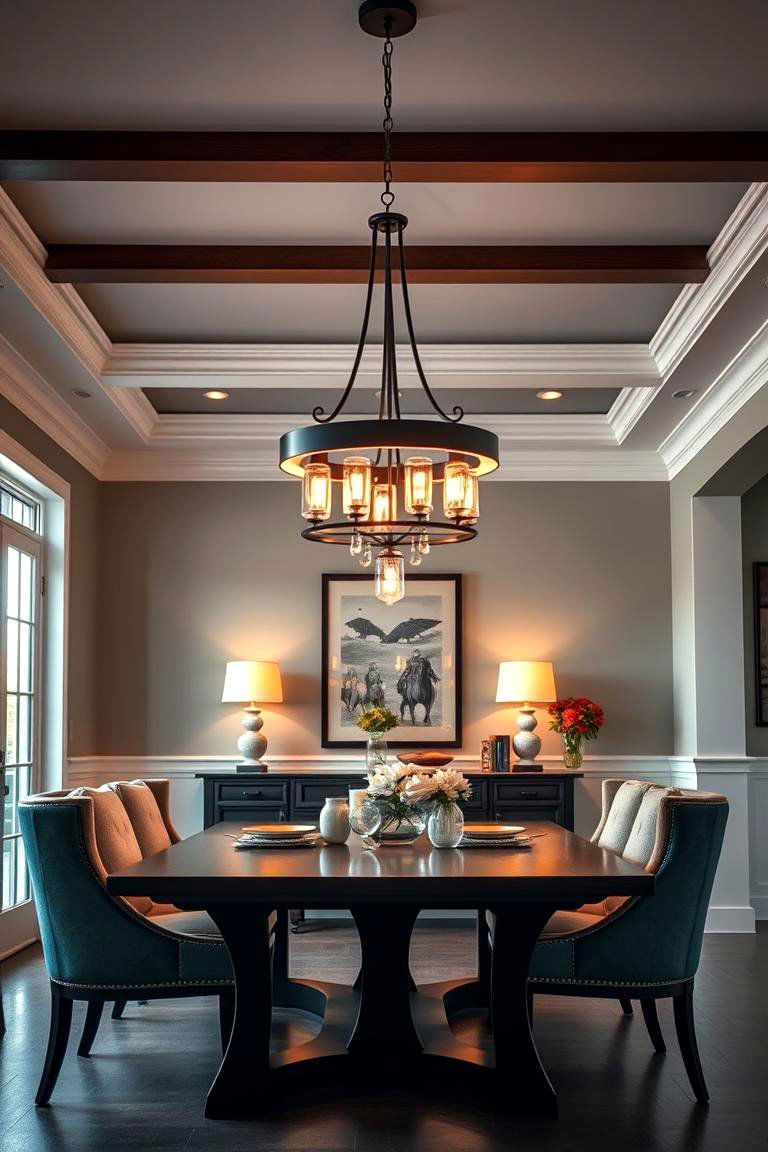
Lighting is one of the easiest ways to bridge the gap between traditional and contemporary styles. Opt for light fixtures that have both modern appeal and classic undertones, such as a sleek chandelier with vintage-inspired elements. A well-chosen pendant light can add visual interest and enhance the ambiance of the room, providing the perfect amount of warmth. Experiment with different light sources like recessed lights, floor lamps, and sconces to create layers of light, adding both functional and aesthetic value to your transitional dining room.
5. Add Statement Artwork for Personality
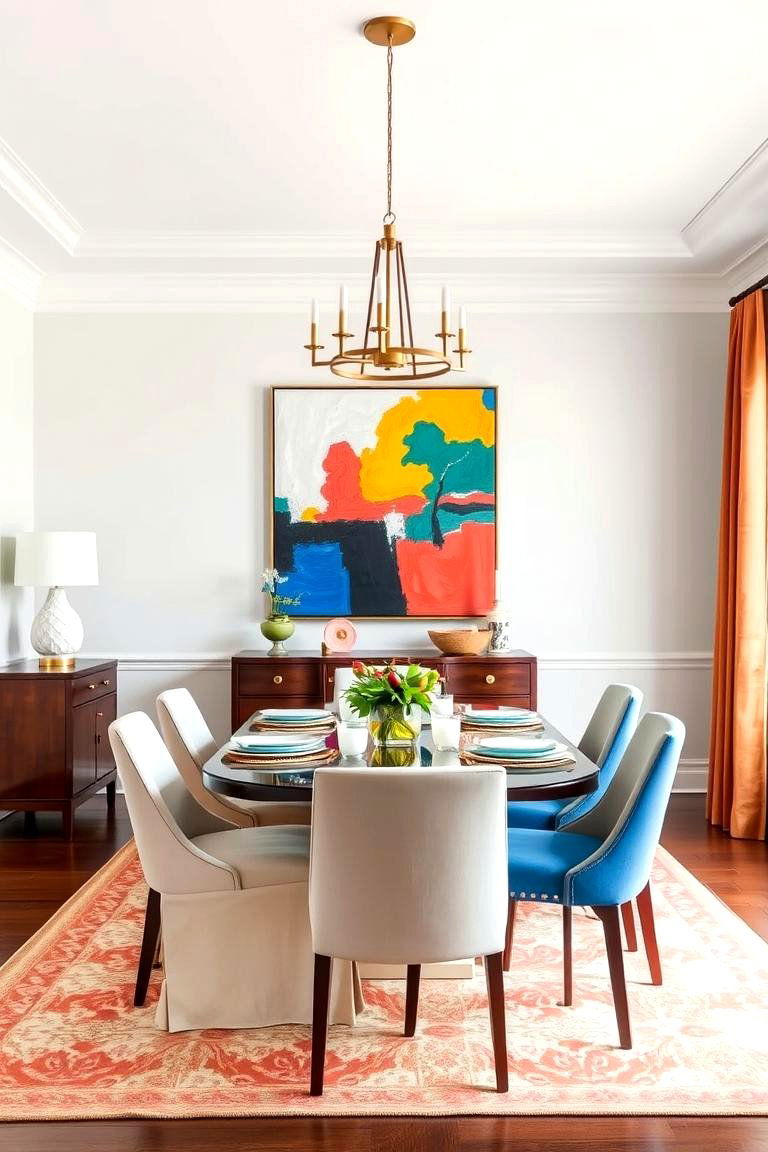
Artwork plays a key role in adding personality to your dining room. In a transitional design, this is where you can infuse personal style while still keeping the overall aesthetic balanced. A large, bold painting can serve as the focal point, drawing attention and adding vibrancy to the space. For a more minimalist approach, consider black-and-white photography or abstract art. The key is to select pieces that complement the room’s color palette and furniture, adding a sophisticated yet personal touch that makes the space feel uniquely yours.
6. Mix Textures for a Layered Look
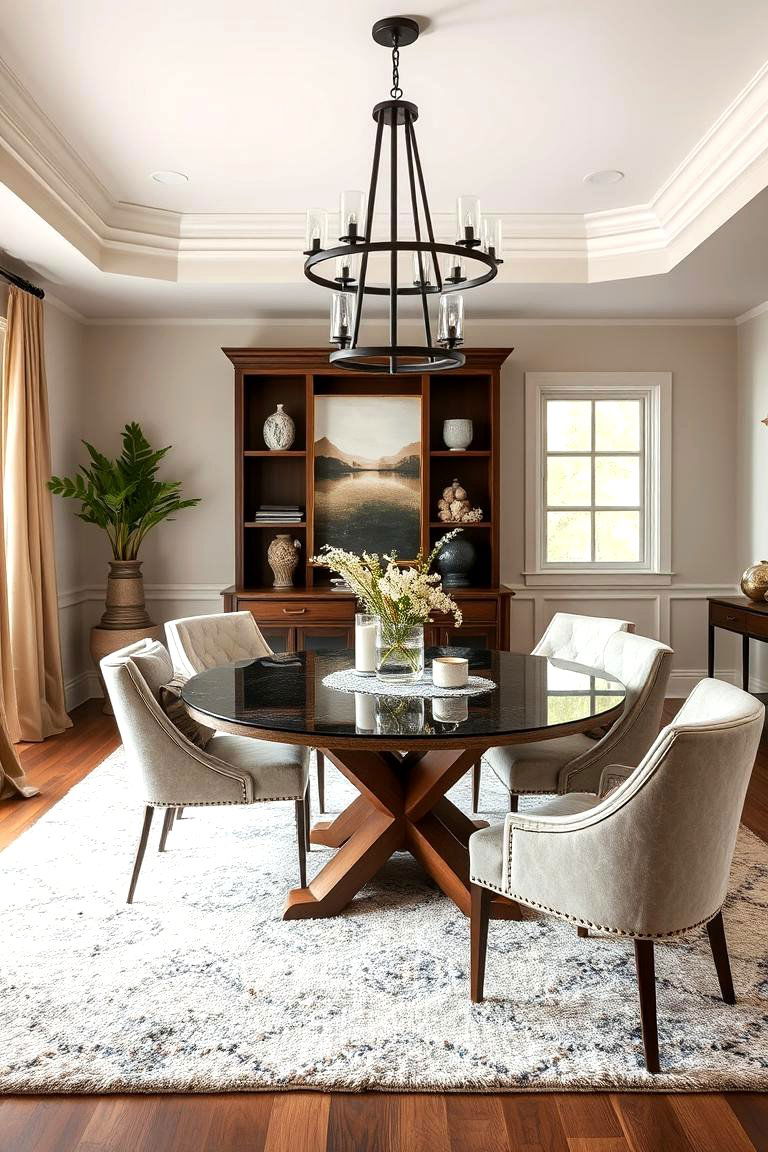
Incorporating a variety of textures is one of the best ways to achieve a transitional dining room that feels inviting and interesting. Combine plush fabrics like velvet or linen with natural materials like stone or metal. A soft wool rug beneath the dining table can ground the space, while metal light fixtures or a sleek glass vase add contrast. By mixing textures, you create a layered effect that gives the room a sense of depth and complexity, making it feel both cozy and sophisticated without overwhelming the senses.
7. Choose Classic Patterns with a Modern Twist
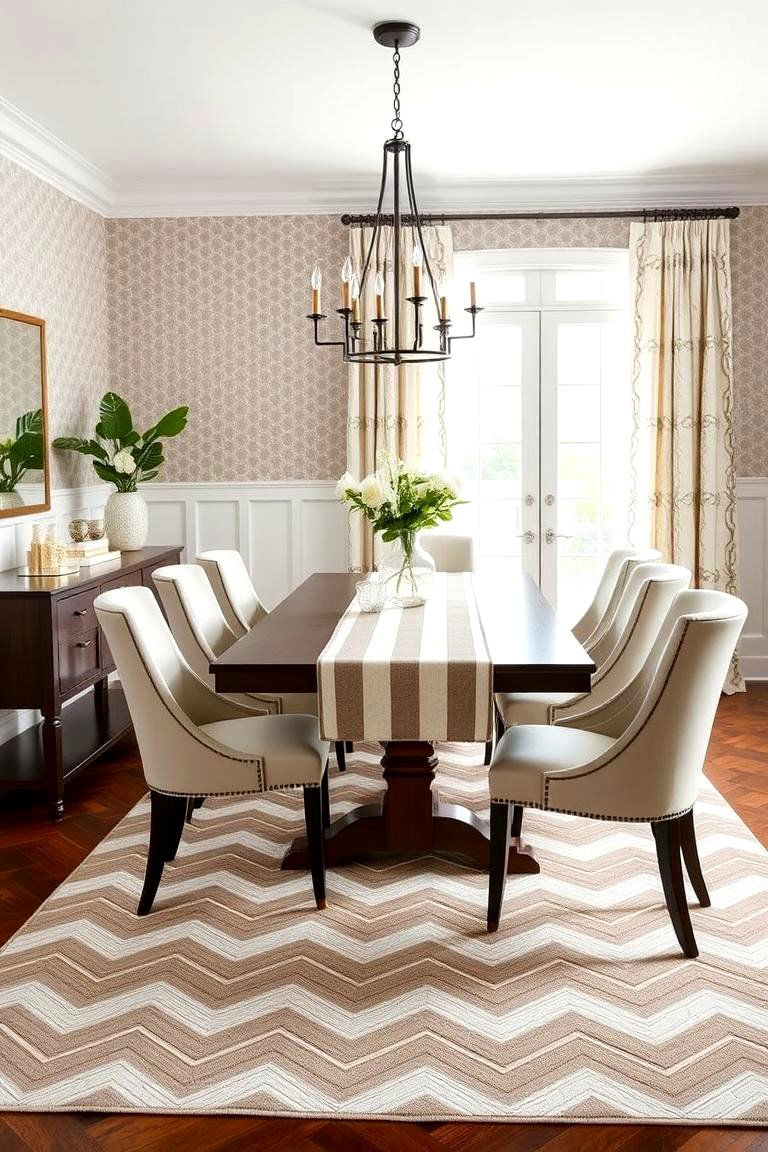
Incorporating patterns in a transitional dining room doesn’t have to mean bold, clashing designs. Instead, focus on classic patterns like stripes, houndstooth, or geometric shapes but with modern elements. For example, a chevron rug in muted tones or a striped table runner in neutral colors adds a stylish touch without overpowering the room’s overall aesthetic. These patterns can inject personality and interest into the space while still maintaining a polished and timeless feel that works across eras.
8. Invest in Quality Dining Chairs
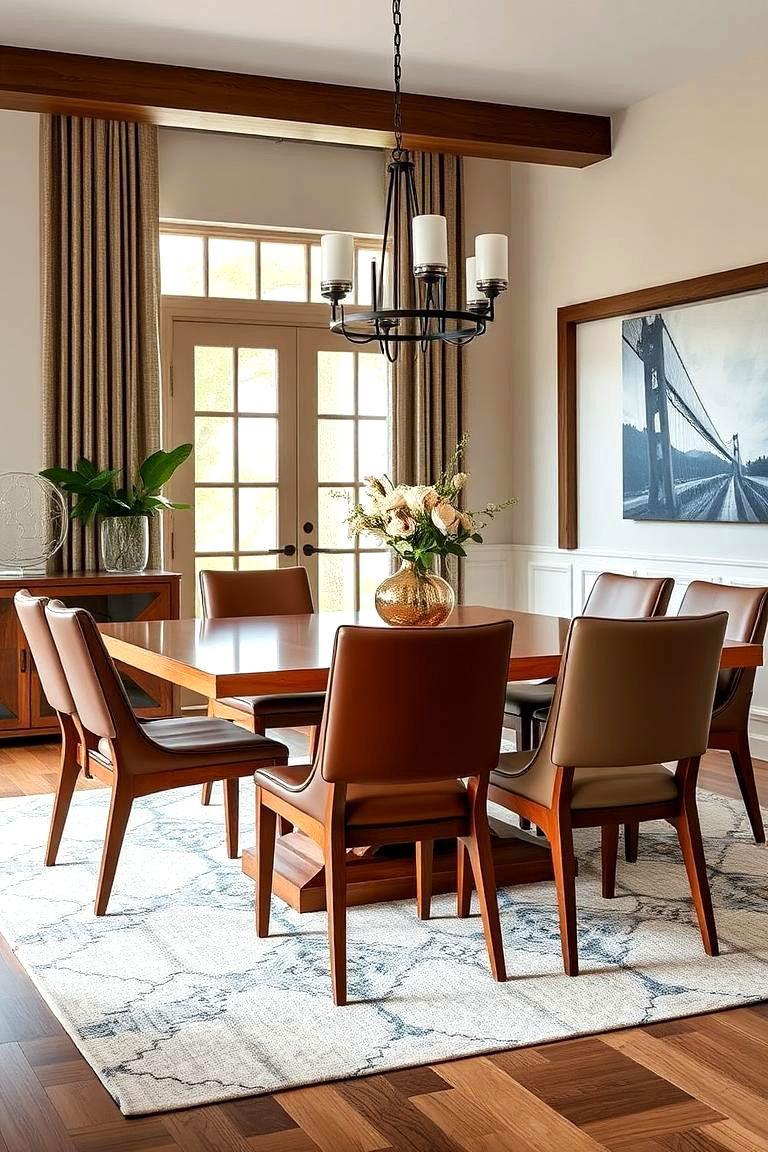
Dining chairs are one of the most important elements in a transitional dining room. Opt for chairs that are both functional and stylish, such as those with a sleek wood frame and soft upholstery. A mix of traditional and contemporary materials, like leather combined with wood or fabric with metal, can create a stunning contrast. Invest in high-quality chairs that are not only visually appealing but also comfortable, ensuring that your guests enjoy both style and functionality during every meal.
9. Opt for Open Shelving for Display
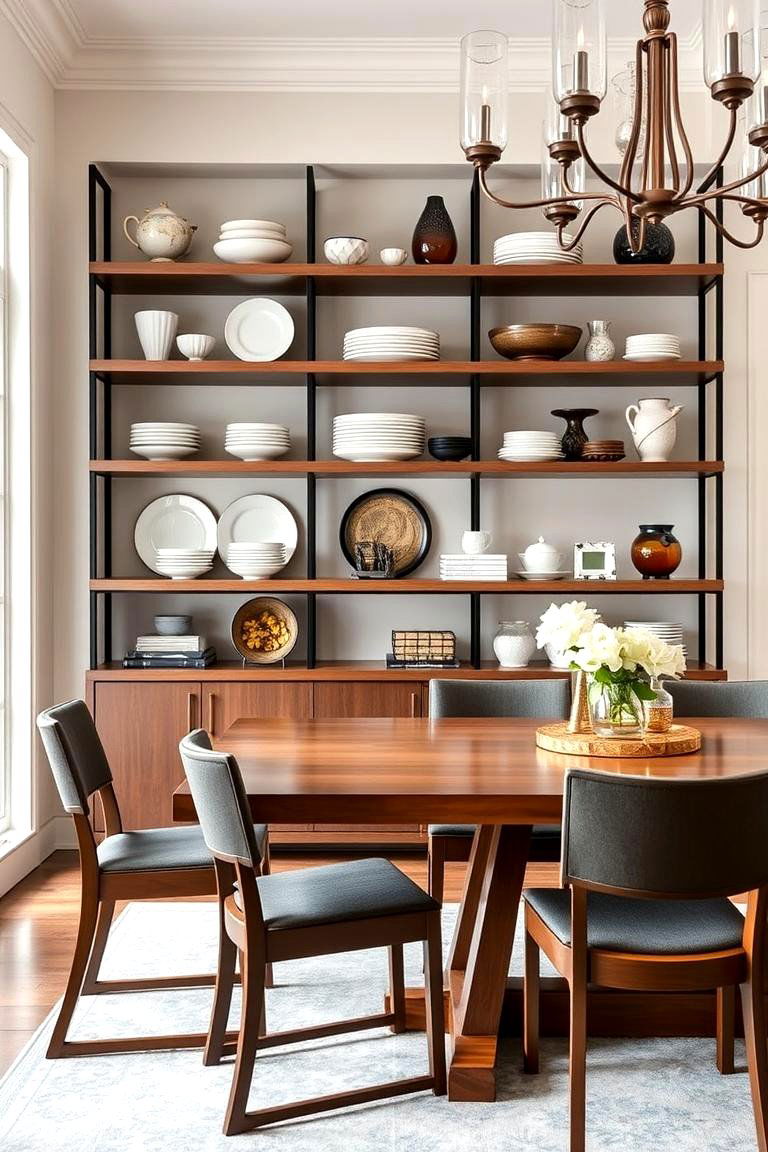
Open shelving can bring both style and practicality to a transitional dining room. Use it to display beautiful dishware, glasses, and other dining accessories in a way that feels intentional yet effortless. Pair sleek, modern shelving units with vintage-inspired decorative pieces to create a space that reflects both old-world charm and contemporary design. Not only does open shelving make items more accessible, but it also adds a personal touch that brings your dining space to life.
10. Incorporate Natural Elements for Freshness
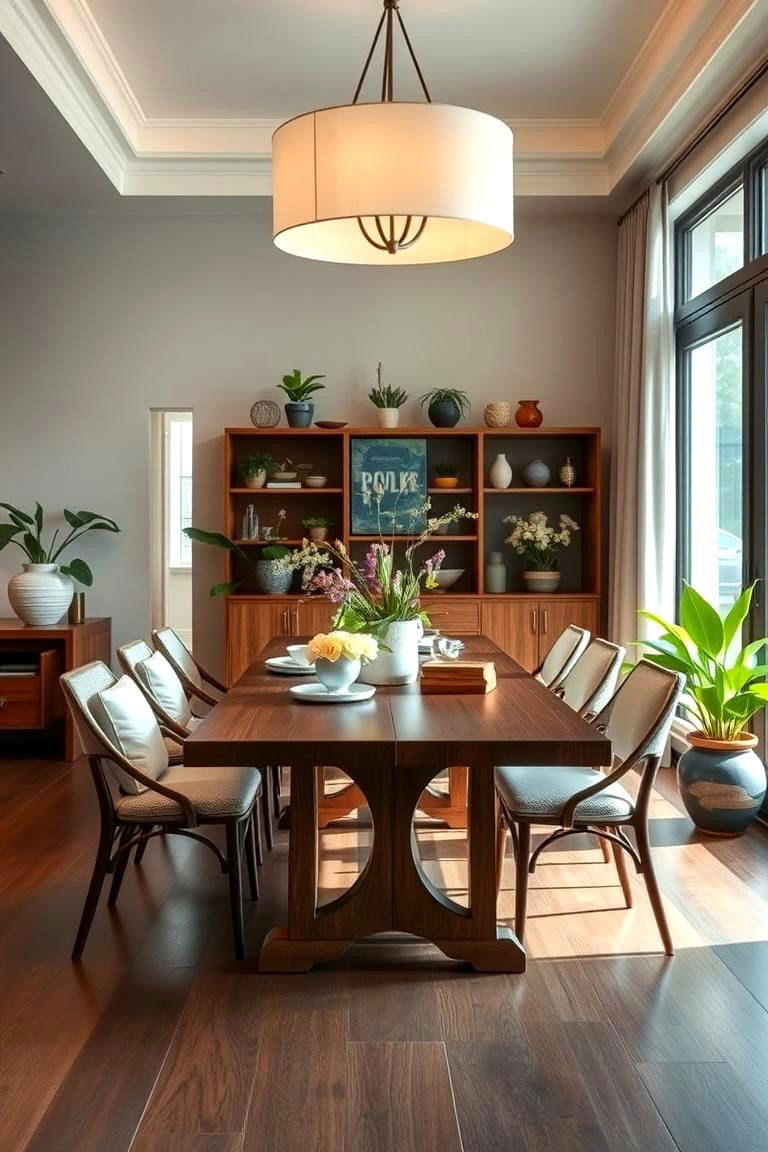
Bring the outdoors in by incorporating natural elements into your transitional dining room. A few strategically placed houseplants or flowers can breathe life into the space, adding a pop of color and freshness. Consider using materials like bamboo, stone, or linen, which all have natural textures that help to evoke a sense of tranquility and connection with nature. These elements create a soothing atmosphere, helping to balance the more polished aspects of your design and add visual interest to the space.
11. Create a Seamless Flow with Open Concept Design
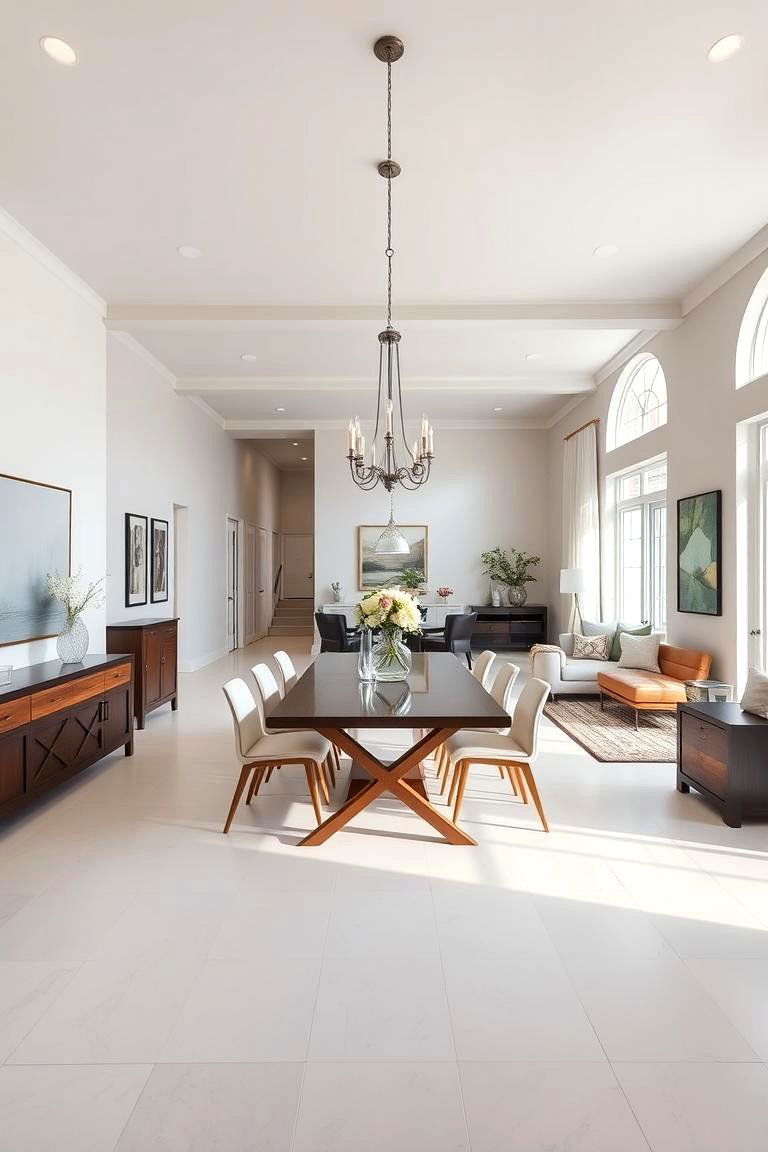
An open-concept design allows your dining room to flow seamlessly into adjacent spaces, such as the living room or kitchen. This layout enhances the feeling of openness and airiness, which is ideal for a transitional dining room. Use furniture to gently demarcate different areas without disrupting the overall flow. Incorporating elements like consistent flooring or color schemes between rooms can help maintain a cohesive look, ensuring the transition between spaces feels natural and effortless.
12. Choose a Statement Rug to Anchor the Space
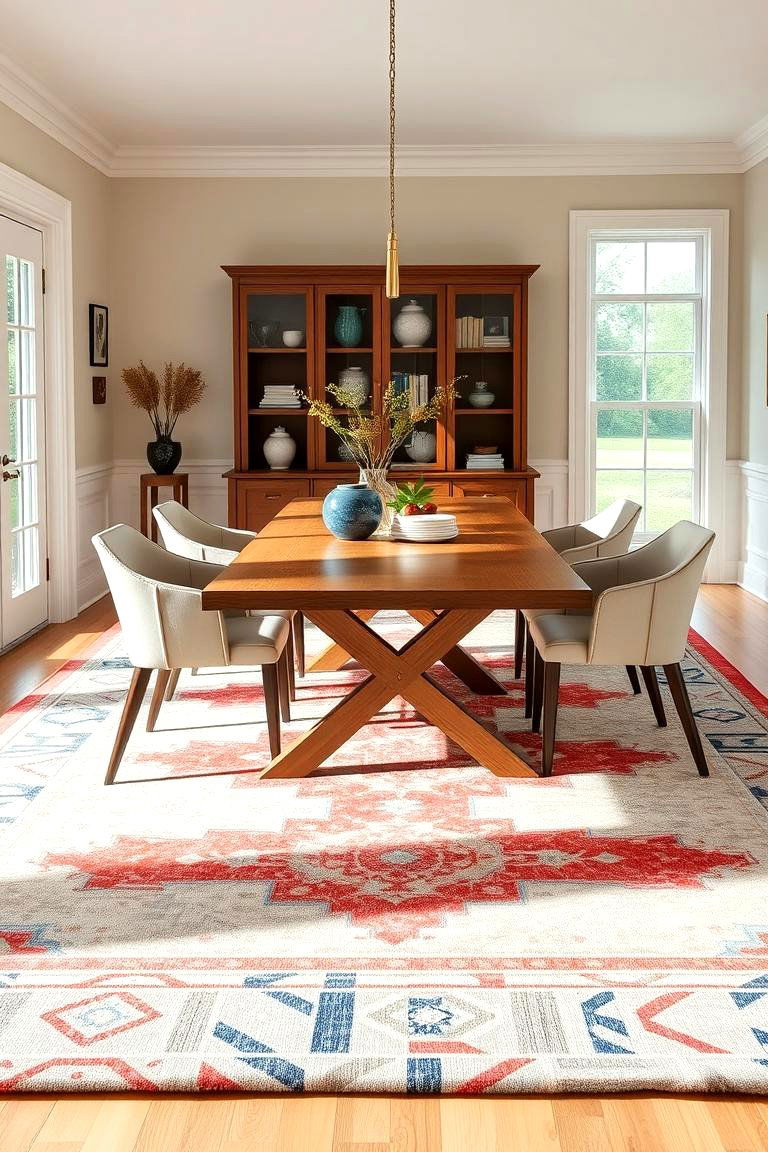
A bold statement rug can anchor the room, tying together various design elements in your transitional dining room. Choose a rug that complements the colors and textures in your space, whether it's a modern geometric pattern or a more traditional design with vintage appeal. The right rug can define the dining area, adding warmth and texture underfoot while enhancing the room's overall aesthetic. A well-chosen rug can serve as a focal point that grounds the entire design.
13. Consider a Floating Dining Table for a Contemporary Touch
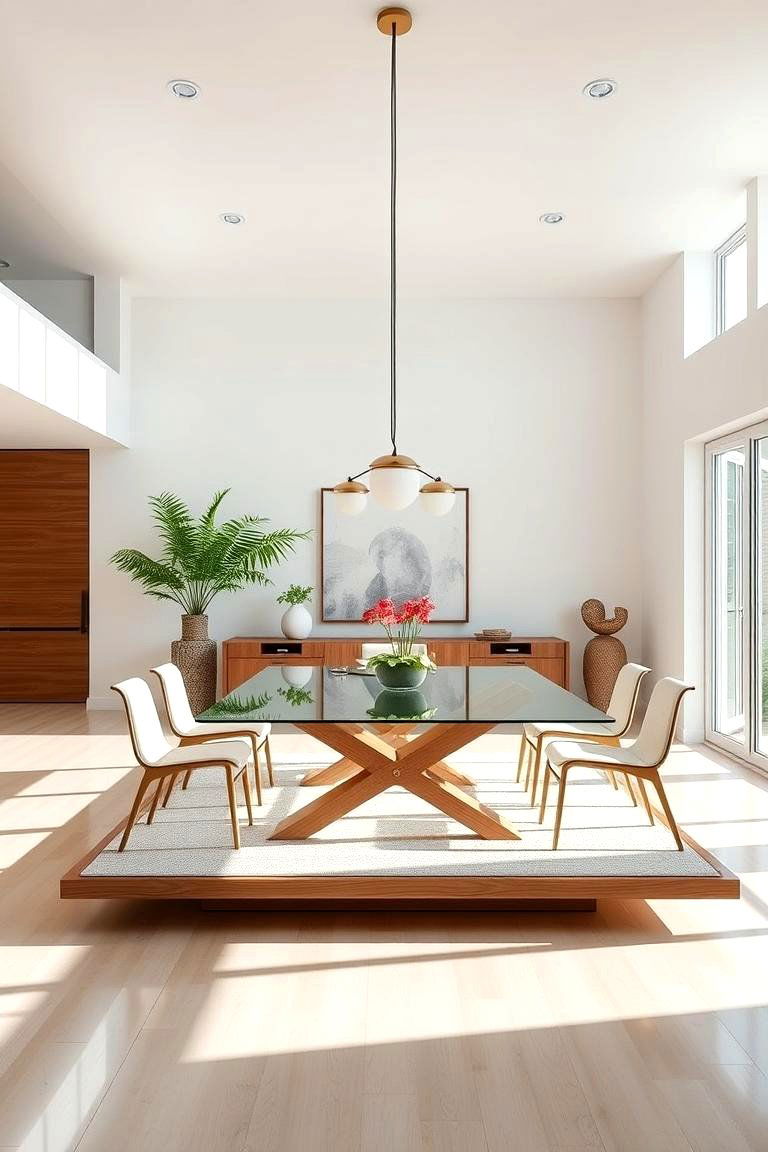
For a more modern look, consider a floating dining table with a minimalist design. These tables appear to "float" in the space, creating a sense of openness while still providing functional seating for family and guests. Floating tables with clean lines and glass or light wood finishes help add to the contemporary vibe, seamlessly fitting within a transitional dining room. This design idea allows for an airy, open space that still feels grounded in practicality.
14. Use Mirrors to Expand the Room’s Perception
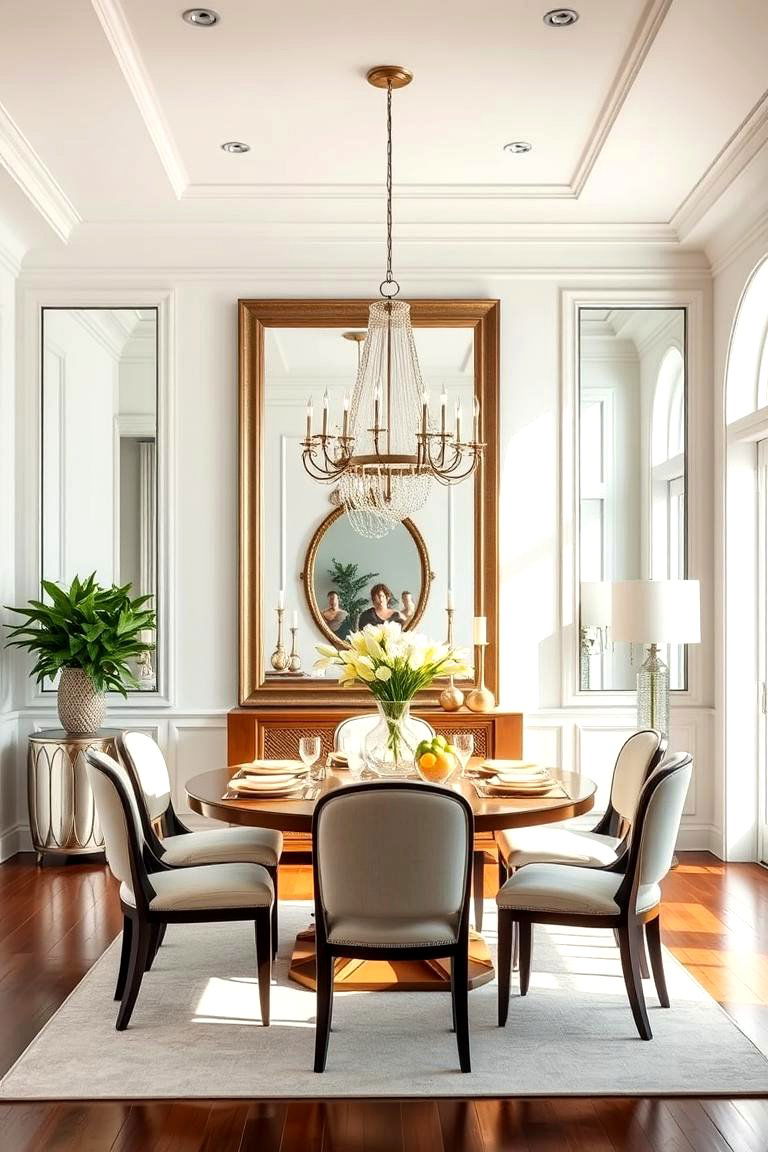
Mirrors are a great way to visually expand a room, making it appear larger and more open. Consider adding a large mirror on one wall of your transitional dining room to reflect light and space. Mirrors with elegant frames that combine modern and traditional elements add sophistication while enhancing the room’s functionality. This simple addition can make a significant impact, brightening the space and adding an extra layer of style.
15. Pair Contrasting Materials for Dynamic Design
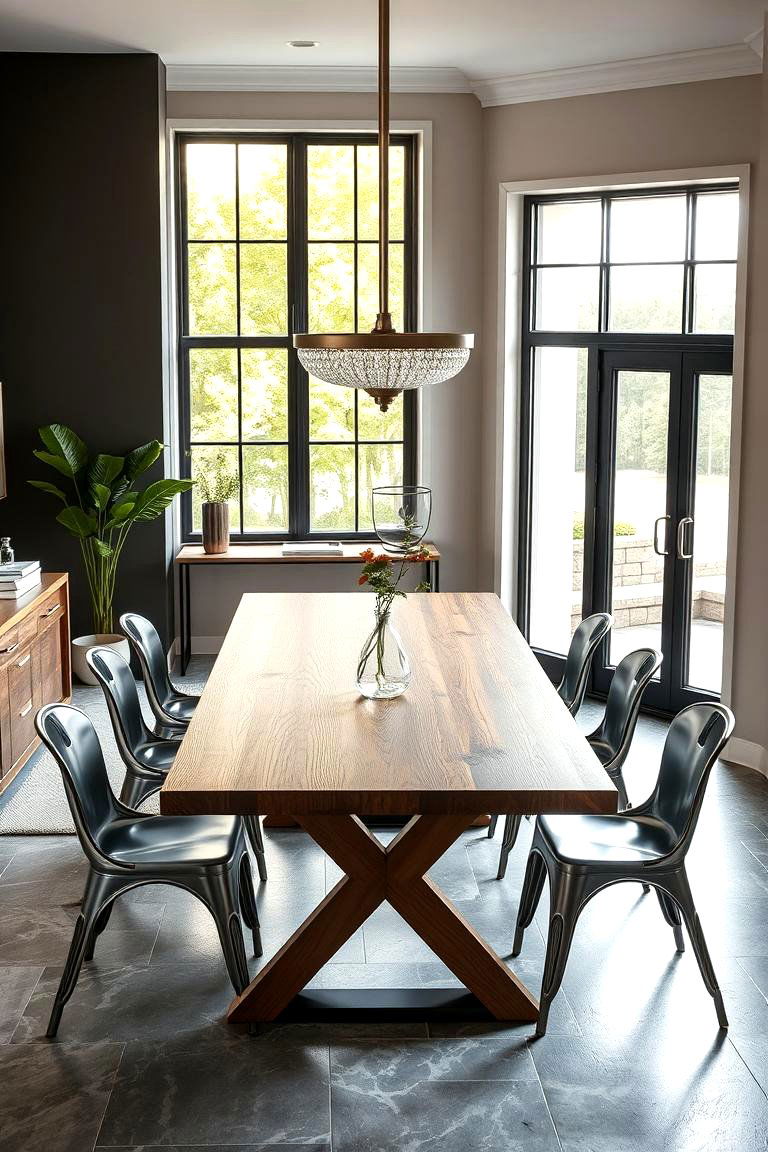
One of the defining features of transitional design is the pairing of contrasting materials. For example, a wooden dining table combined with metal chairs creates a dynamic contrast between natural and industrial elements. Similarly, pairing stone floors with sleek, modern furniture can result in a visually striking combination. By mixing different textures and materials, you create a room that feels balanced yet full of interest, combining elements from both traditional and contemporary styles.
16. Install Custom Blinds for Privacy and Style
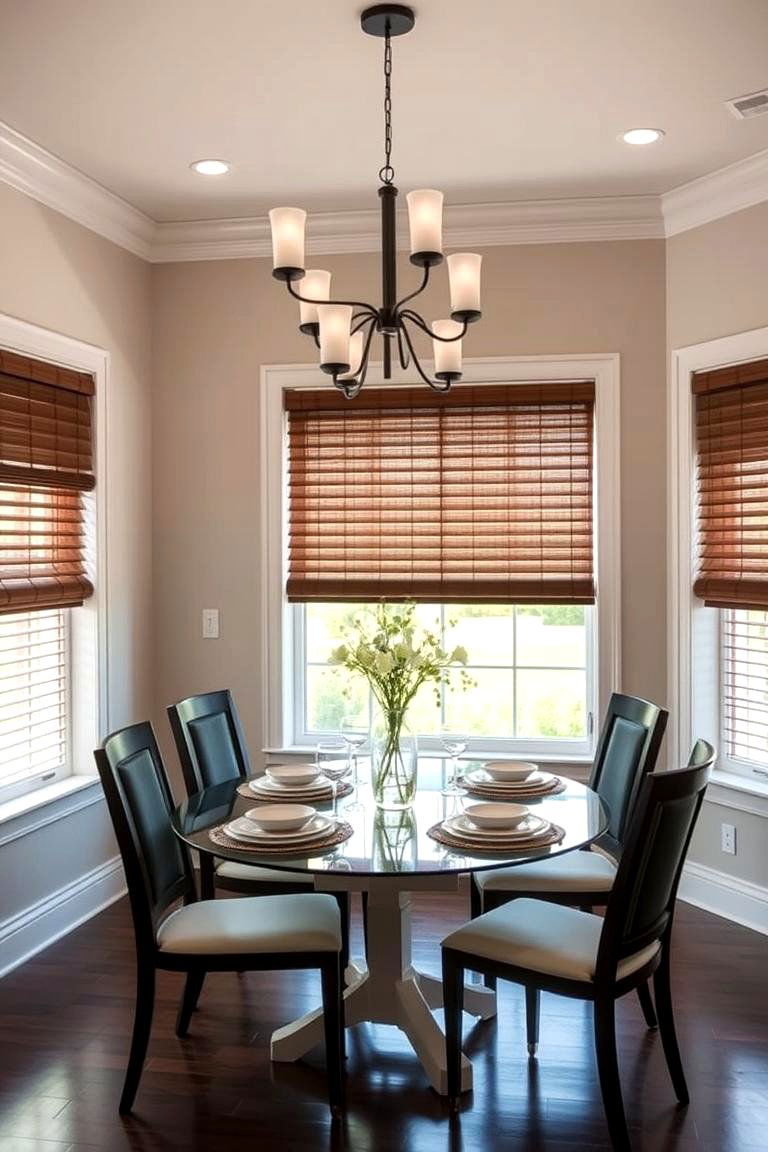
Custom window blinds are an excellent addition to any transitional dining room. These functional pieces not only provide privacy but also help regulate the natural light entering the room. Choose blinds that match the aesthetic of your space, whether that’s sleek, modern shades or more traditional wooden blinds. The right blinds will enhance the design of the room while giving you control over light and privacy, making your dining room both stylish and practical.
17. Incorporate a Buffet or Sideboard for Storage
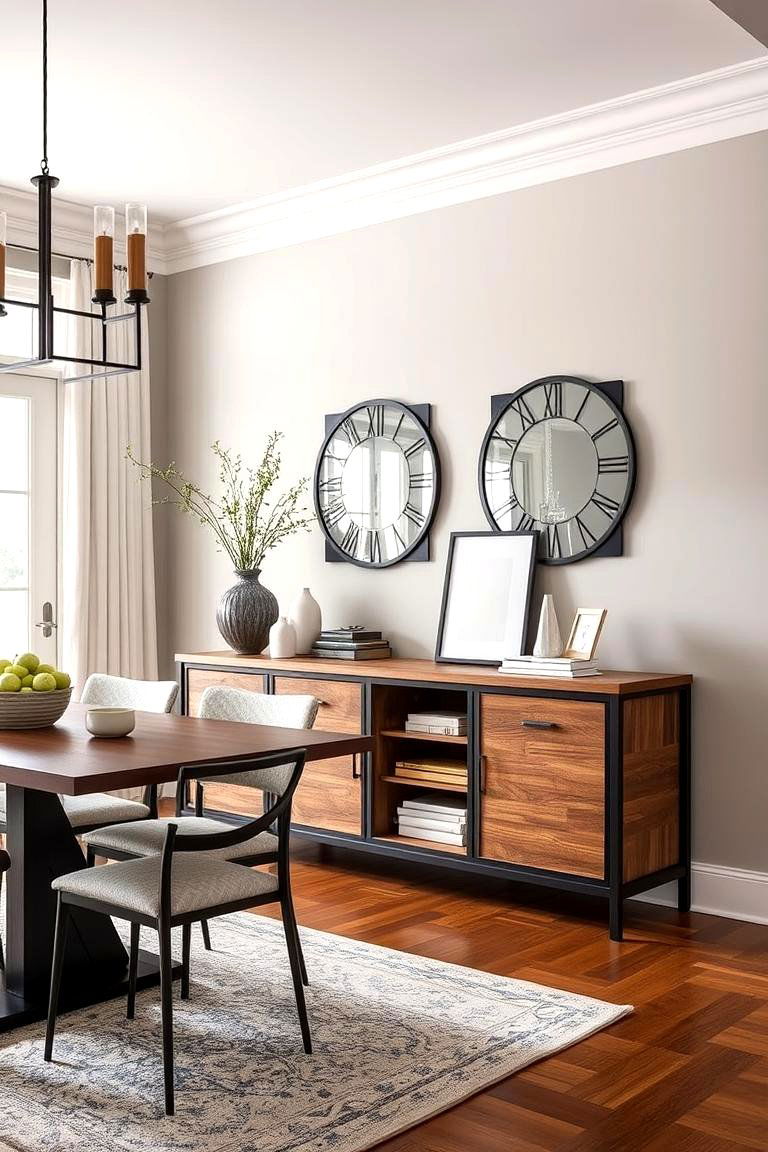
A buffet or sideboard is both a functional and stylish addition to a transitional dining room. These pieces provide much-needed storage for dishes, linens, and other dining essentials, keeping your space organized and clutter-free. Opt for a sleek, modern design that still evokes a sense of timelessness, like a wood-and-metal combination. A buffet also acts as a great spot for decorative items like lamps, vases, or sculptures, adding both functionality and style to the room.
18. Use Multi-Functional Furniture Pieces
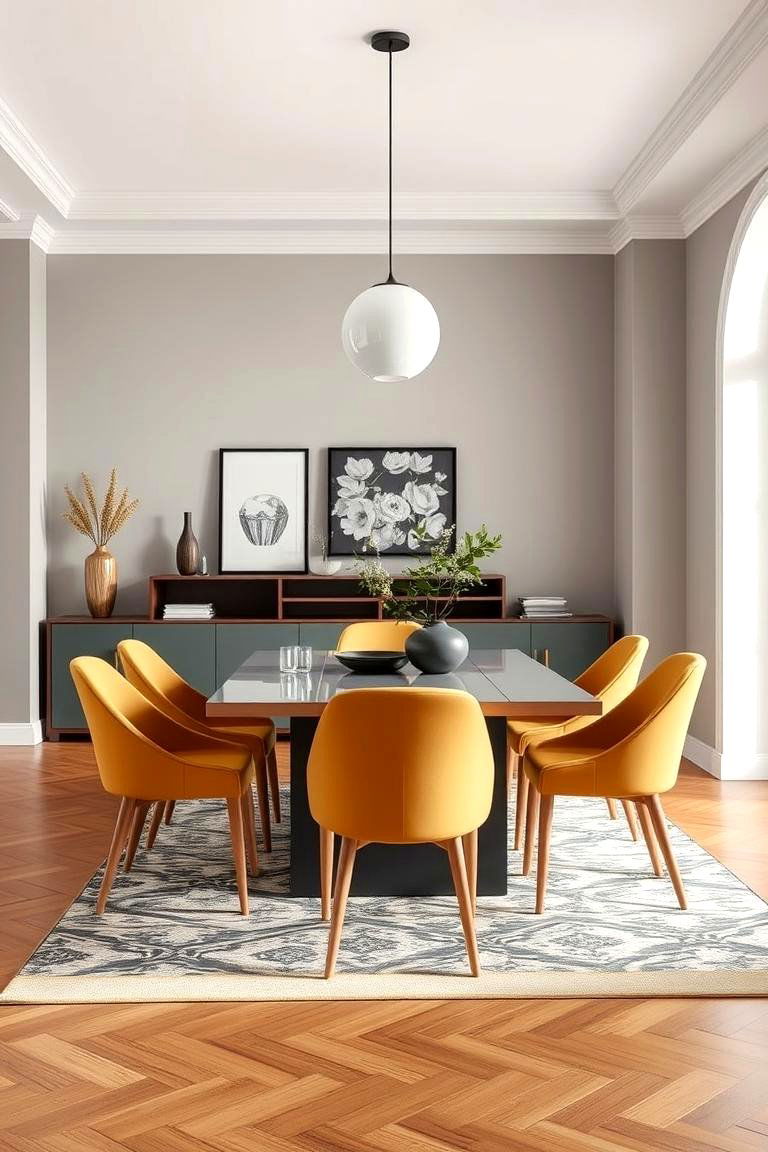
In a transitional dining room, multi-functional furniture can save space without sacrificing style. A dining table that extends to accommodate more guests or chairs with hidden storage underneath are excellent choices for this design. These pieces provide both form and function, allowing your space to adapt to different needs while maintaining a sleek, cohesive look. When space is limited, multifunctional furniture is the perfect solution to create a practical, stylish dining area.
19. Go for Low-Profile Furniture to Maximize Space
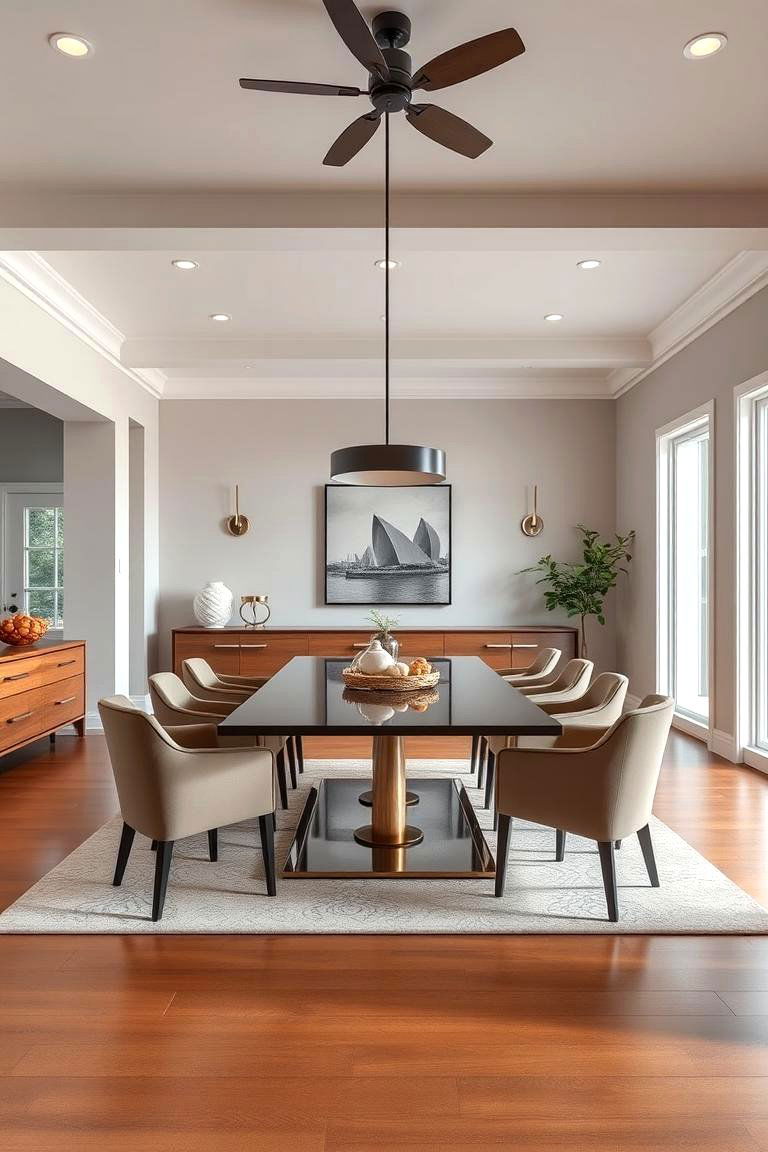
Low-profile furniture is an excellent choice for a transitional dining room, especially in smaller spaces. These pieces, such as low-slung chairs or tables, create a sense of openness and can make the room feel less cramped. The minimalistic aesthetic of low-profile furniture works well with transitional design, as it allows for a clean, streamlined look without compromising on style. Consider incorporating this approach if you're looking to maximize space while maintaining a modern, sophisticated vibe.
20. Layer Lighting with Pendant Fixtures
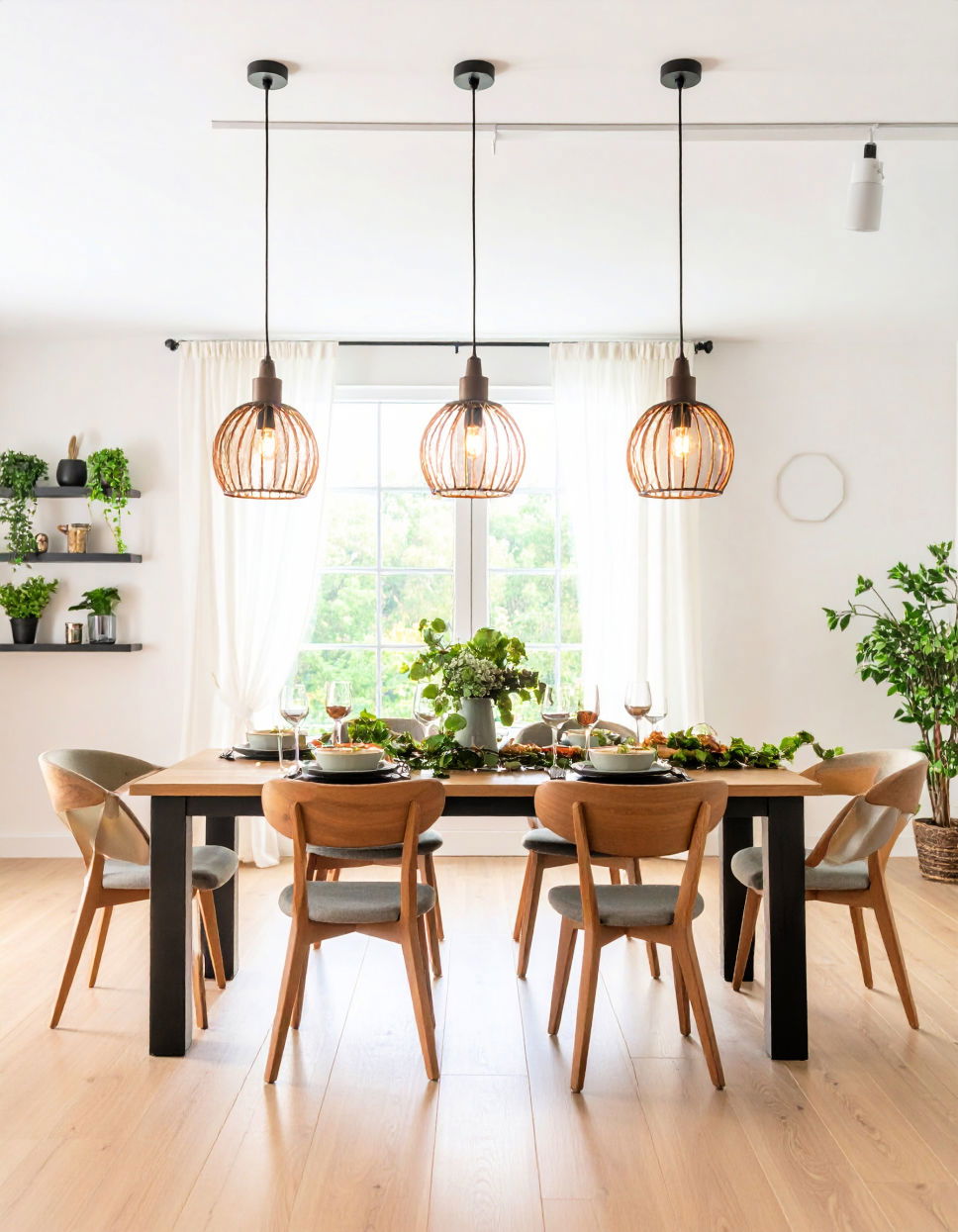
Pendant lighting is a versatile option for a transitional dining room, offering both functionality and style. Hanging a series of pendant lights above the dining table creates a layered lighting effect, enhancing the room’s ambiance. Choose fixtures that combine modern design with classic appeal, like glass or metal shades. By incorporating different heights or clusters of pendant lights, you can add visual interest while ensuring your dining area is well-lit for both functionality and atmosphere.
21. Go for a Dark Accent Wall
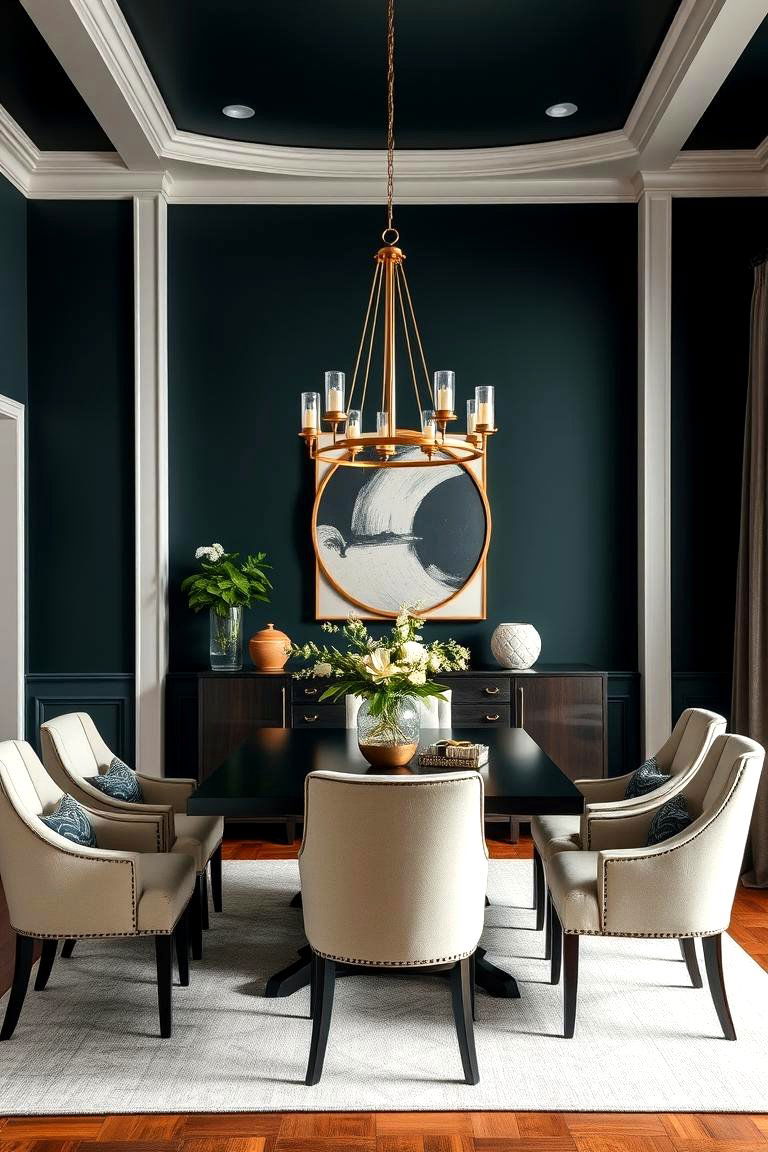
If you’re looking for a bold design move, consider adding a dark accent wall to your transitional dining room. A deep navy, charcoal gray, or even rich forest green can add drama and sophistication to the space. Pairing a dark accent wall with lighter furniture and decor creates a striking contrast that enhances the room’s visual appeal. This bold design choice helps anchor the room while making the space feel both cozy and modern.
22. Incorporate Glass Elements for Lightness
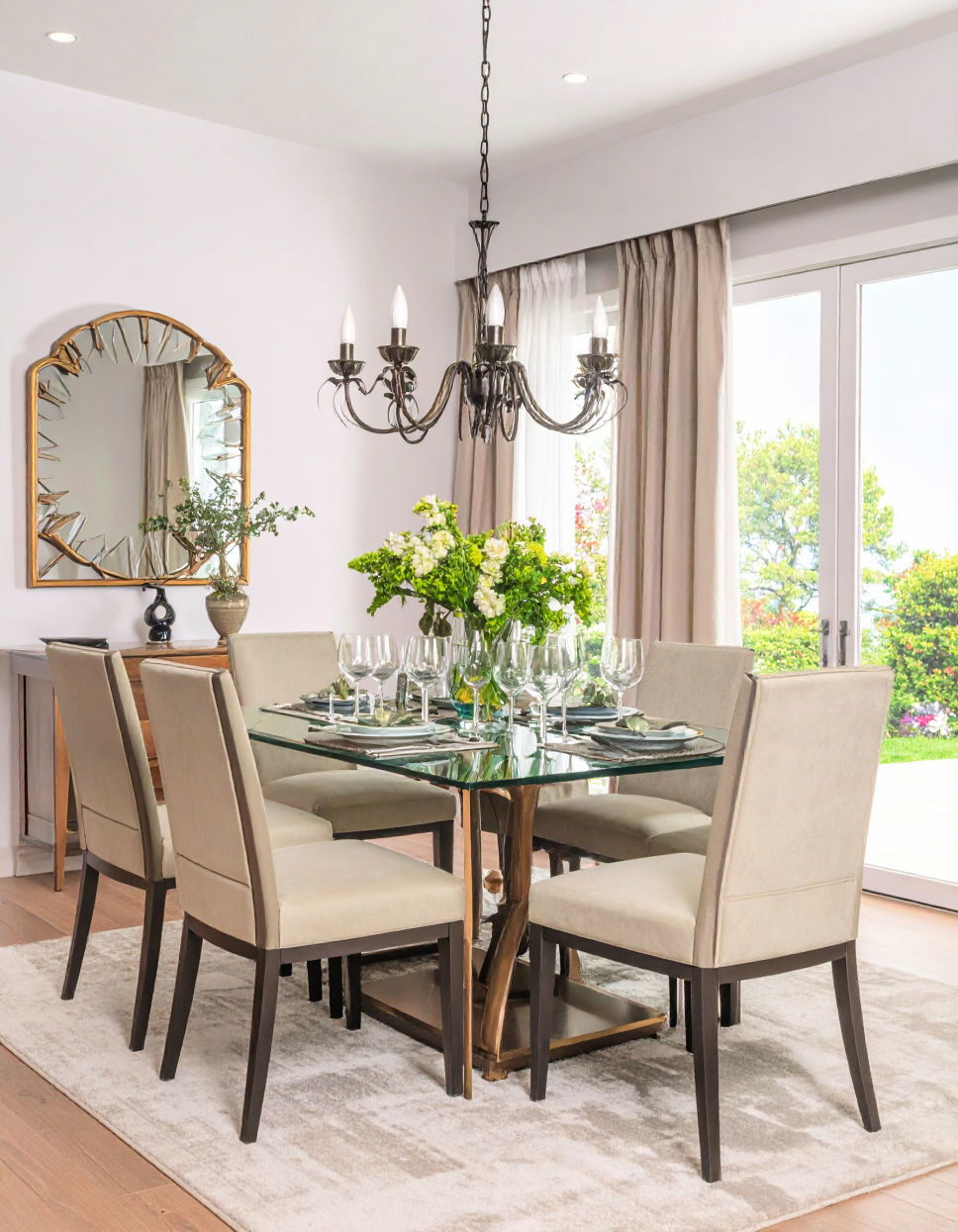
Glass elements, such as glass tabletops, mirrors, or vases, can bring a sense of lightness and transparency to your transitional dining room. These materials help reflect light, making the space feel brighter and more open. Glass furniture also pairs well with other materials, such as metal and wood, creating an airy, modern aesthetic that complements the overall design. By incorporating glass, you can keep the space feeling light and fresh while maintaining an elegant and sophisticated look.
23. Choose a Customizable Dining Table
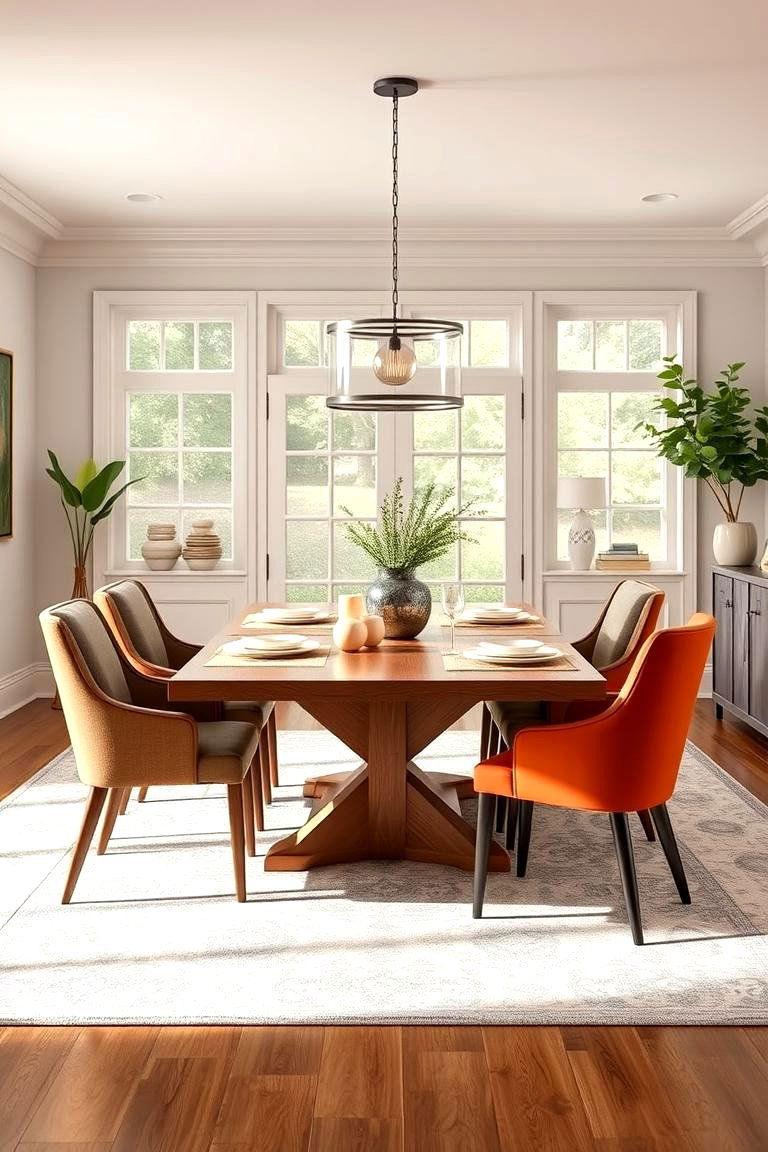
A customizable dining table allows you to adapt the dining space to your specific needs. Whether it’s a table that extends for larger gatherings or one with adjustable height, these tables provide both flexibility and functionality. A well-designed, adaptable table fits perfectly into the transitional style by combining modern innovations with classic appeal. Customizable dining tables are ideal for those who frequently entertain or need a versatile option that can cater to different occasions.
24. Highlight Architectural Details with Subtle Accents
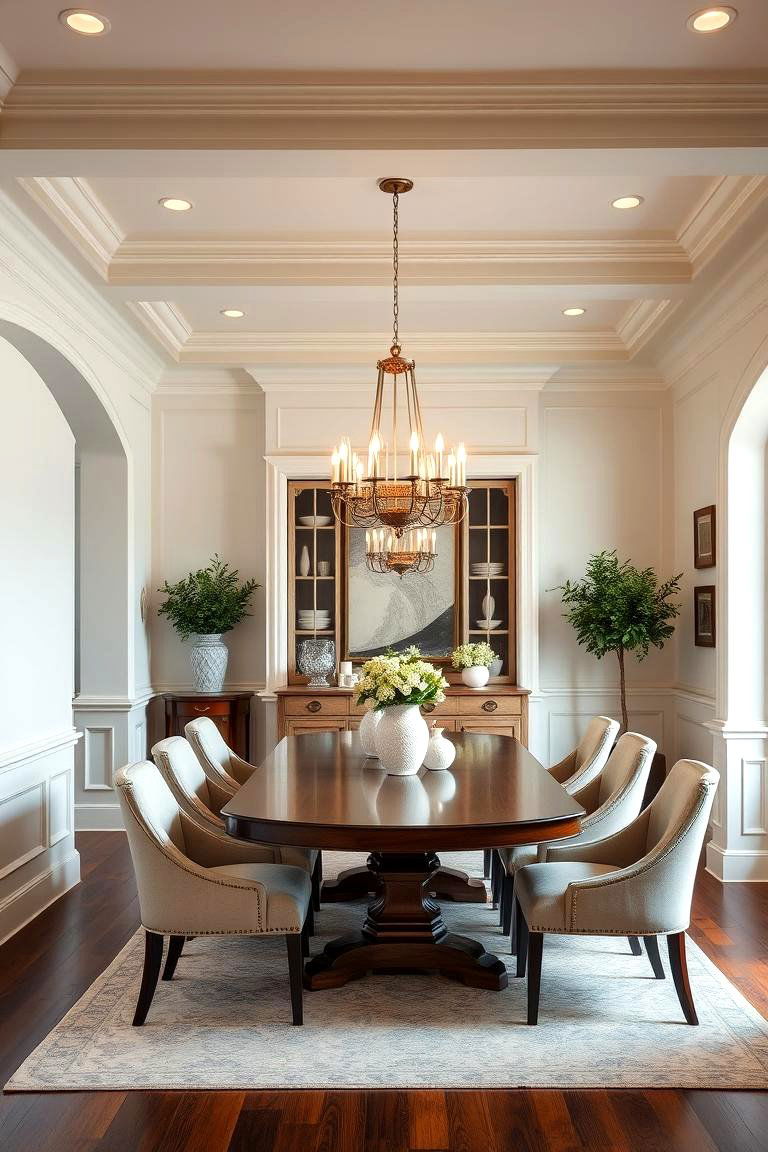
In a transitional dining room, highlighting architectural details like crown molding, baseboards, or exposed beams can add character without overwhelming the space. Keep the accents subtle and refined, ensuring they complement the rest of the design. These small but significant details enhance the room's architectural beauty, creating a sense of depth and sophistication. By subtly incorporating these elements, you can elevate your transitional dining room to a new level of elegance and charm.
25. Mix Classic and Contemporary Dining Chairs
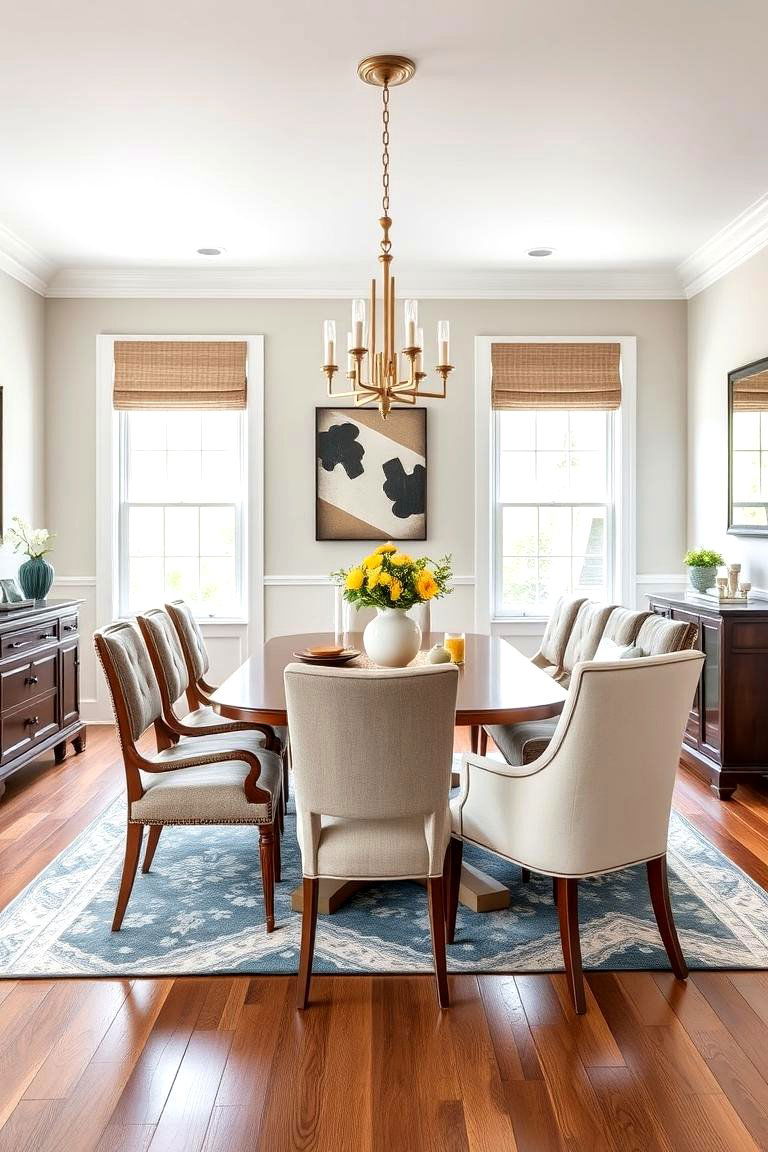
For an eclectic and personalized look, mix and match classic and contemporary dining chairs. Combine traditional wood chairs with sleek, modern upholstered ones for a fun and dynamic seating arrangement. This approach allows you to showcase both sides of the transitional design spectrum, blending vintage and modern styles. The variety in chair designs also adds visual interest, making the dining area feel more unique and reflective of your personal style.
Conclusion:
A transitional dining room combines the best of both worlds—timeless elegance and modern sophistication. By embracing elements like neutral colors, sleek furniture, and varied textures, you can create a space that is both inviting and stylish. Whether you're focusing on bold statement pieces or subtle accents, these ideas provide a range of options for creating the perfect dining environment. Explore these transitional dining room ideas and bring your vision to life, ensuring your space is both functional and beautiful.


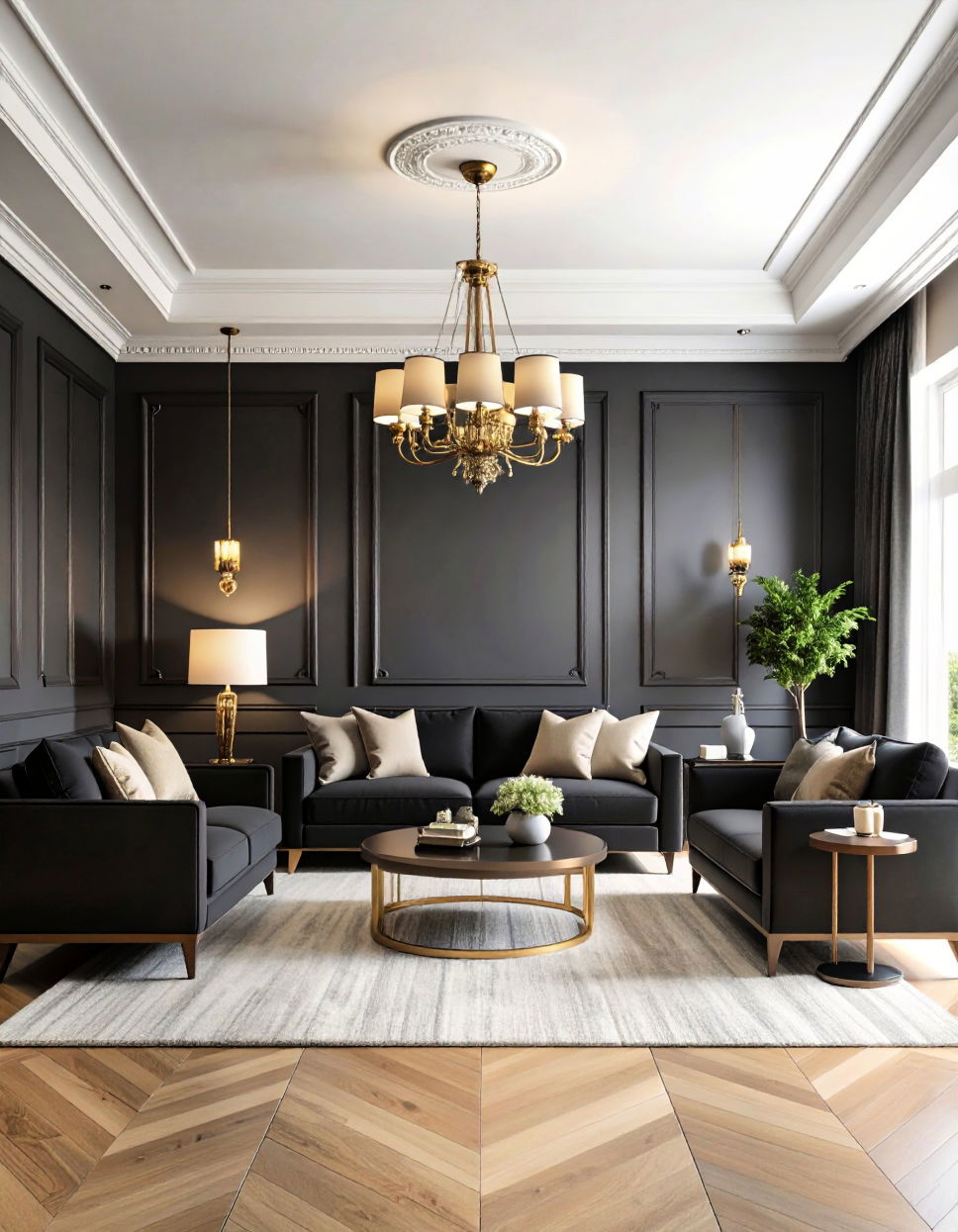
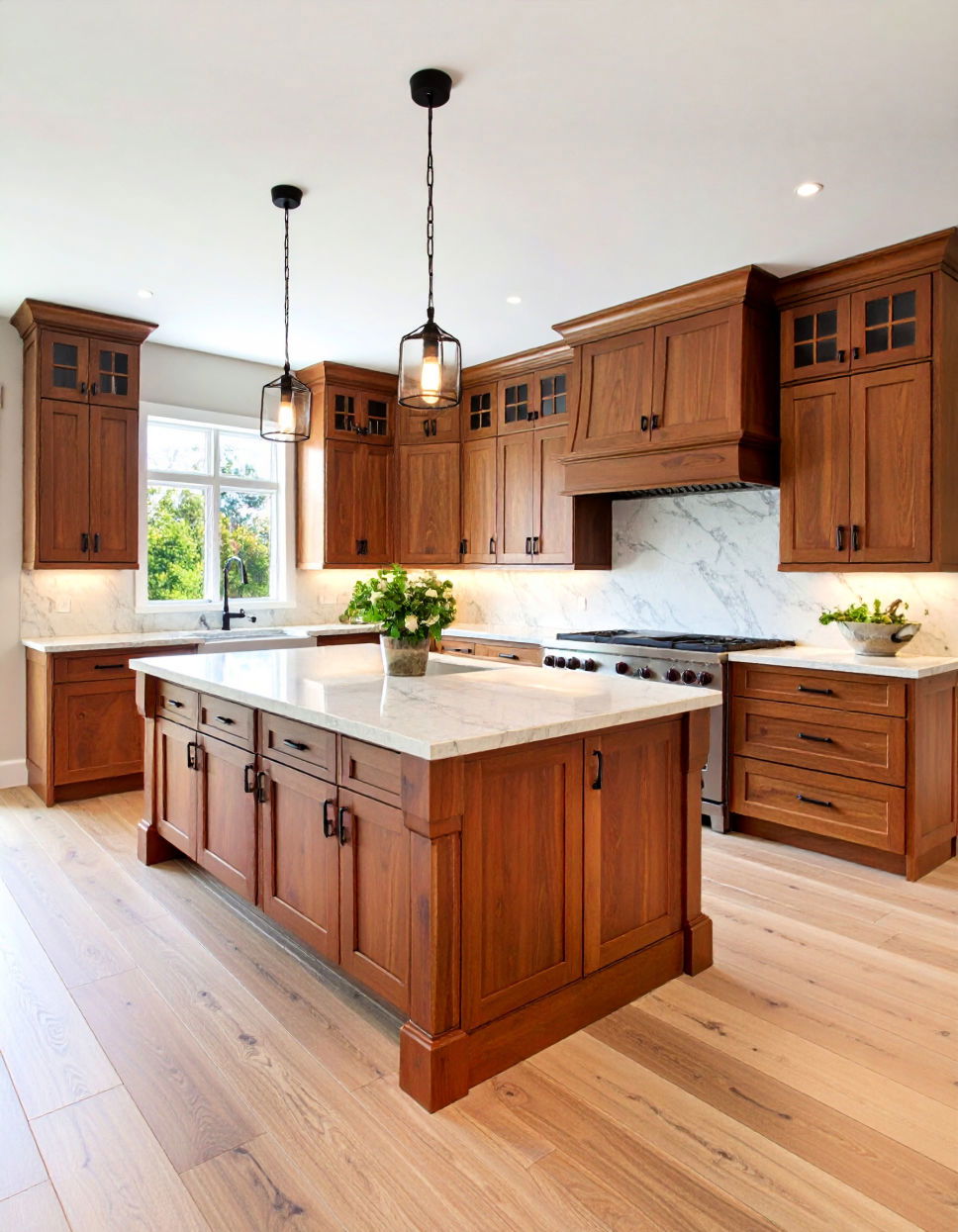

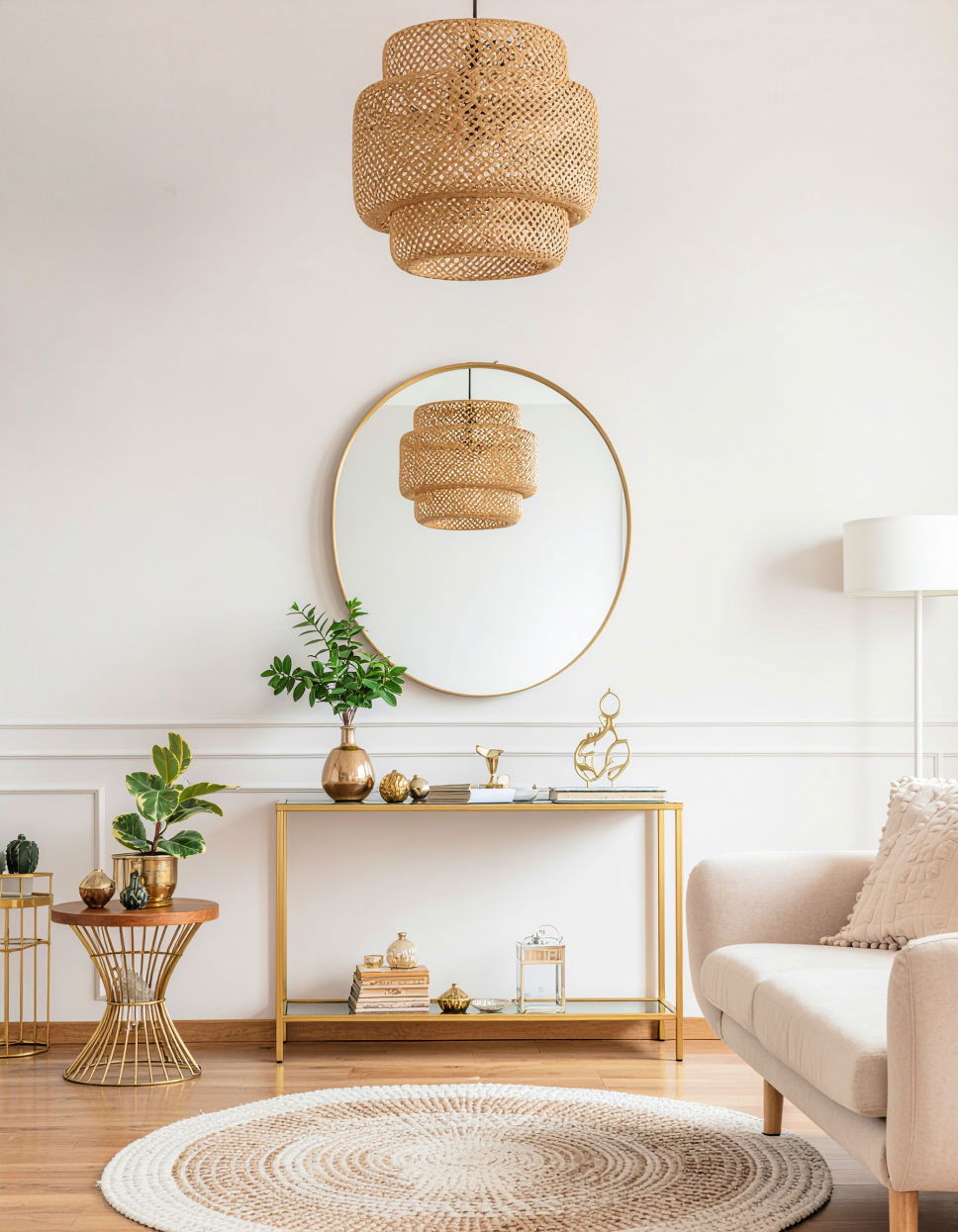
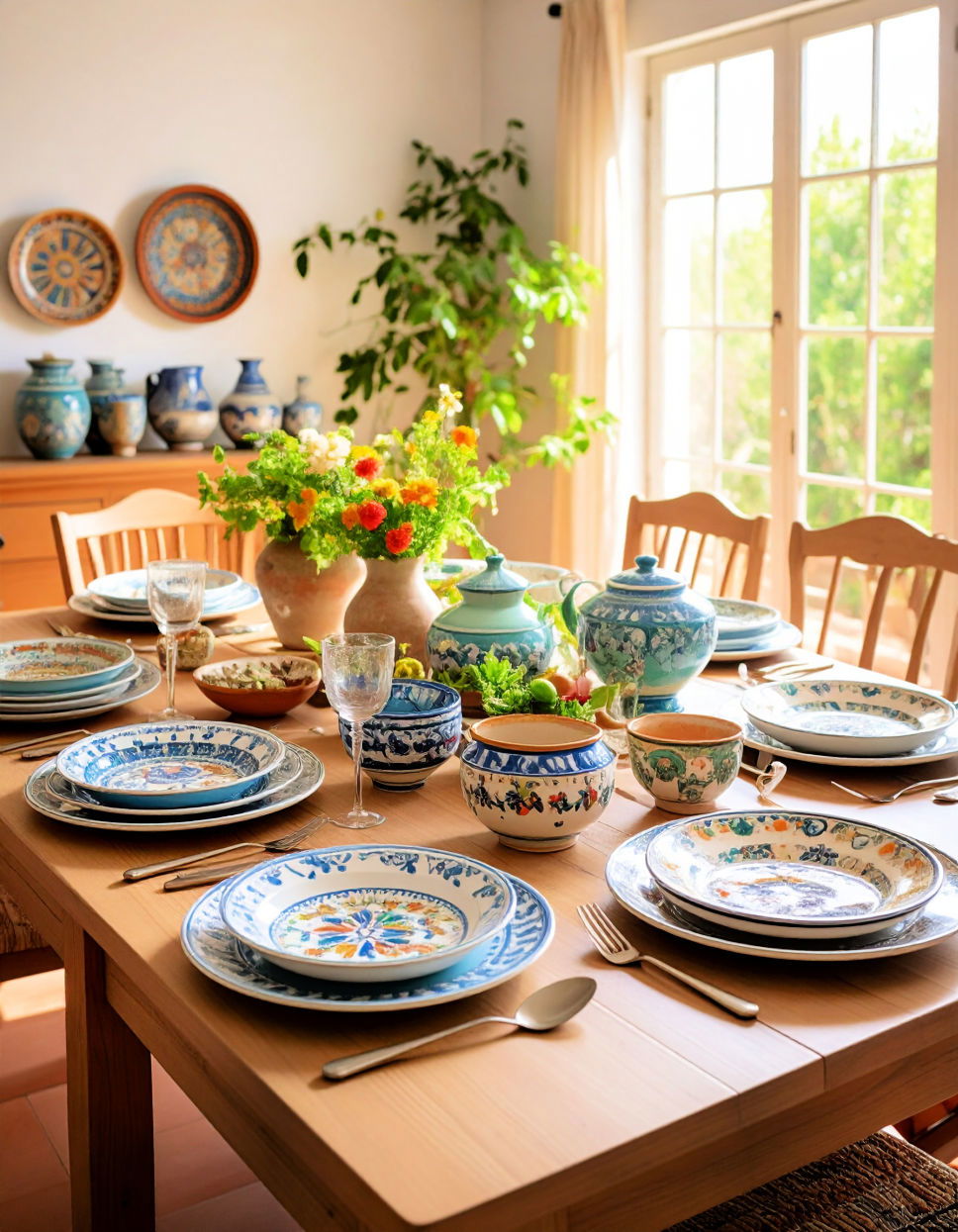
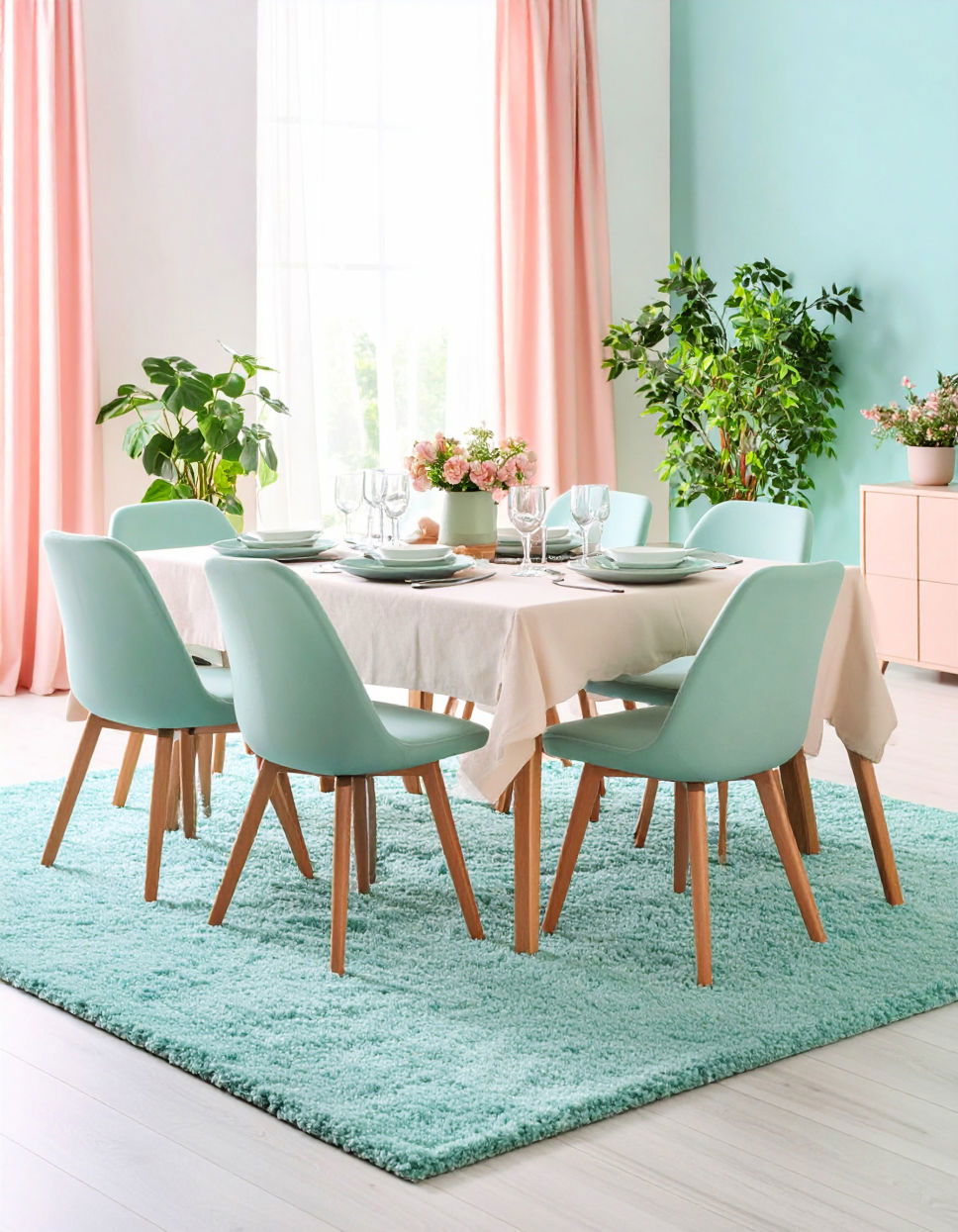
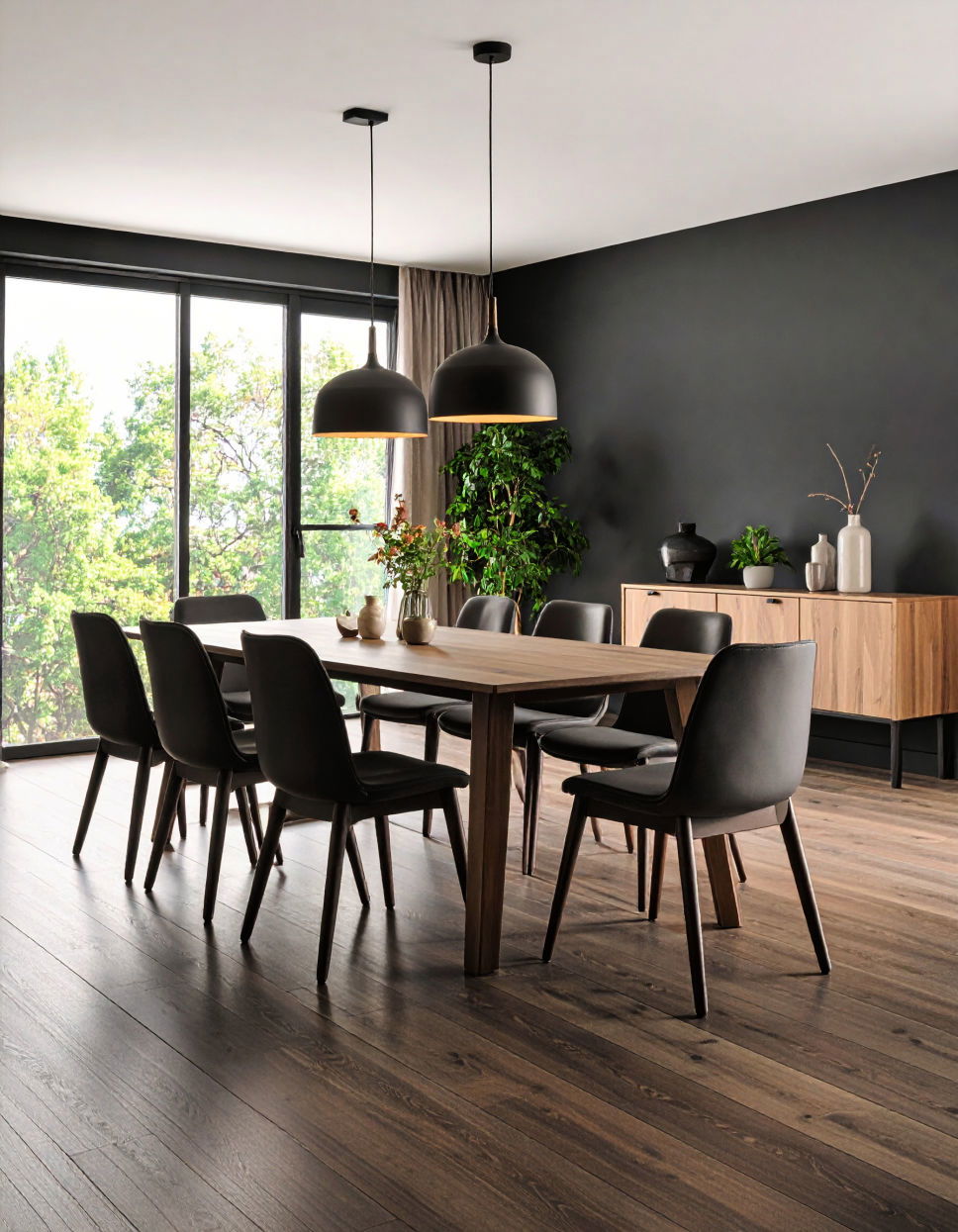
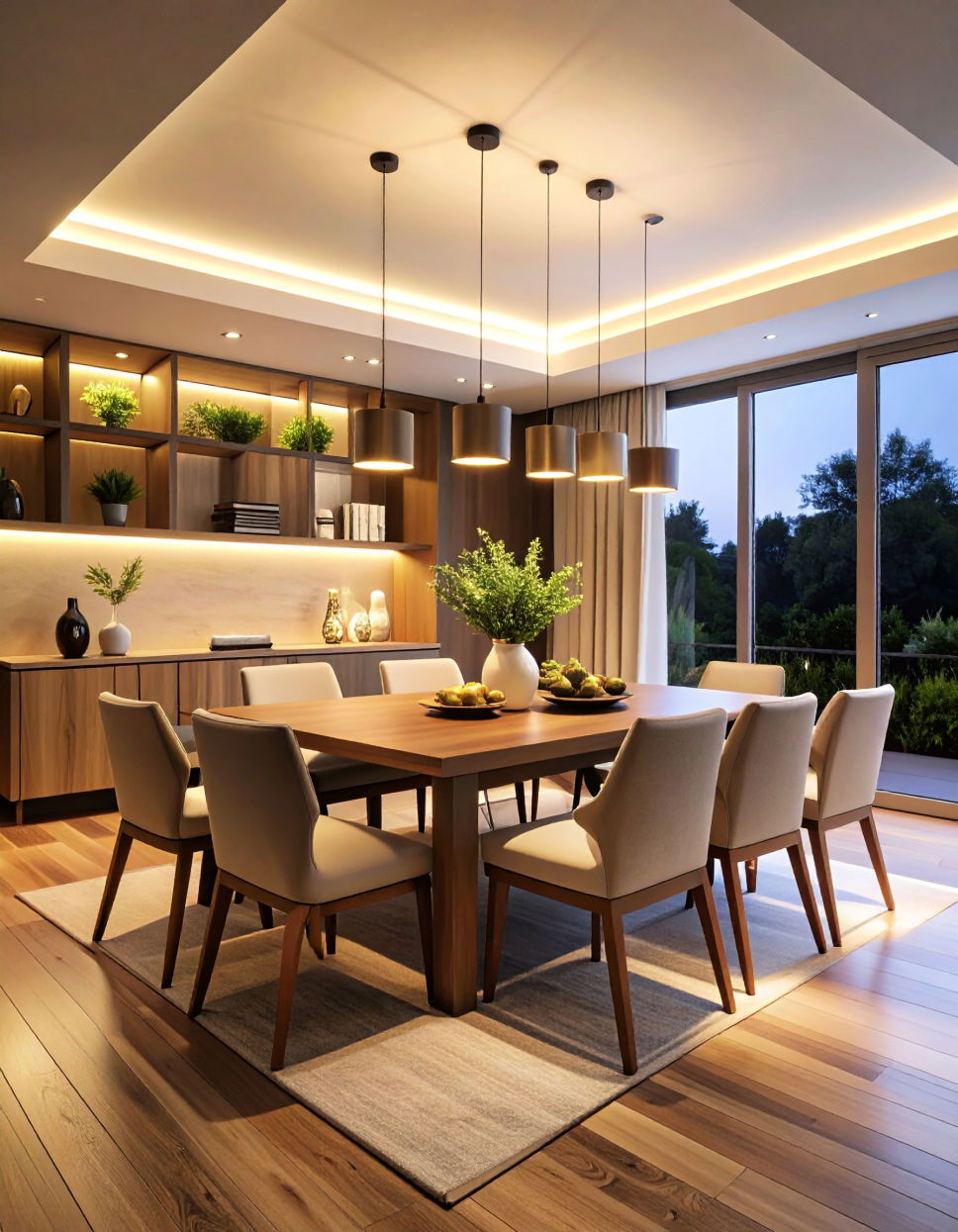
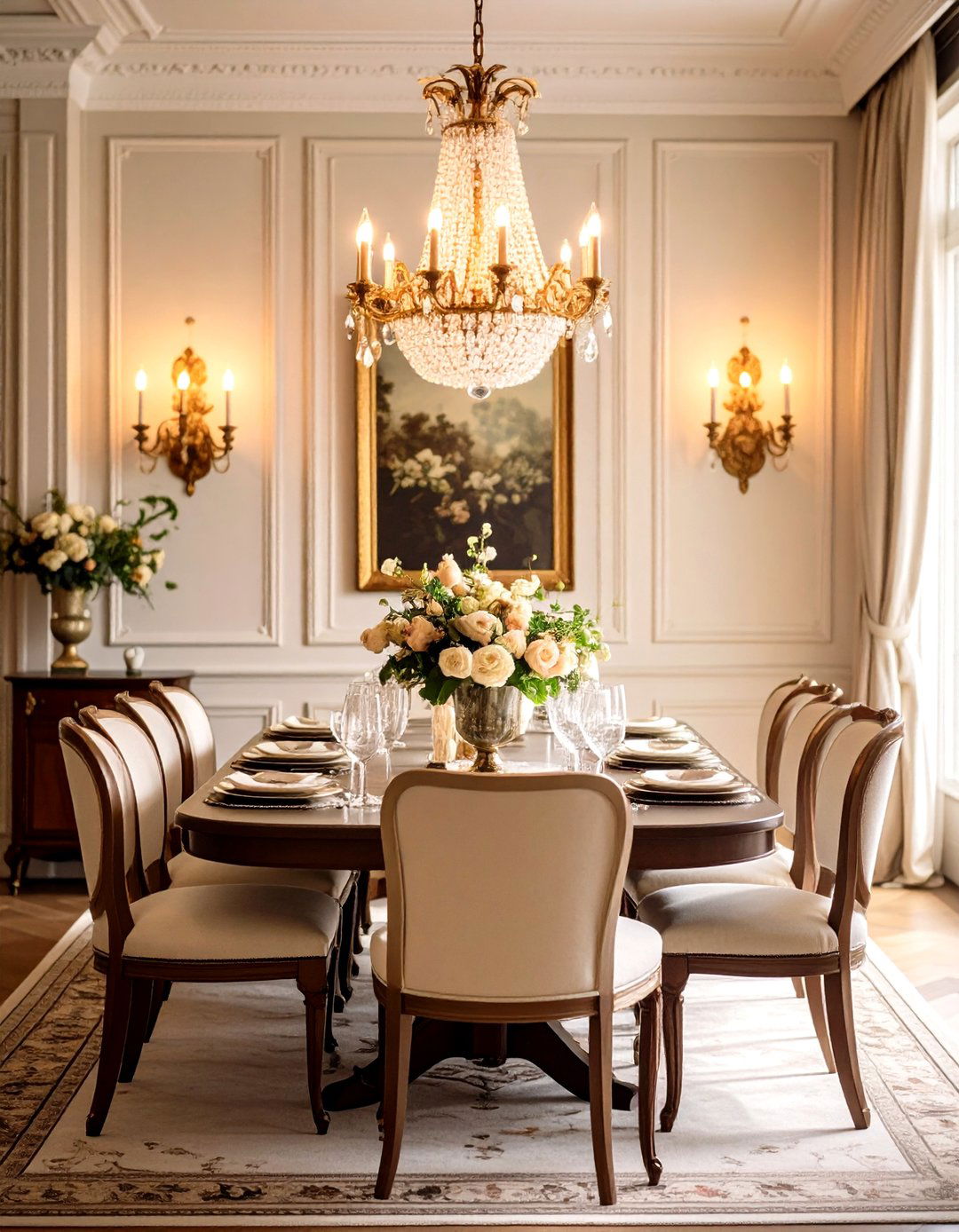
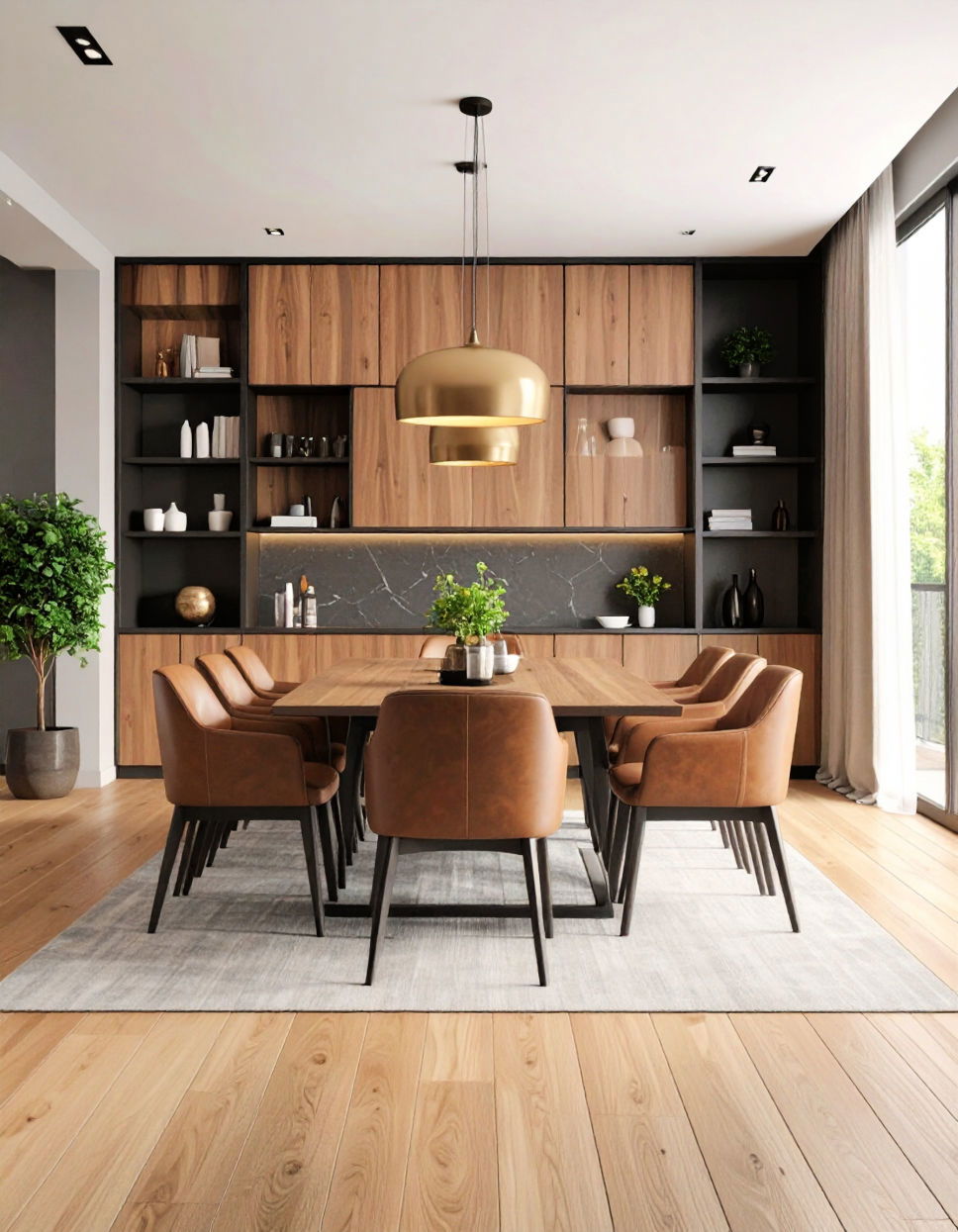
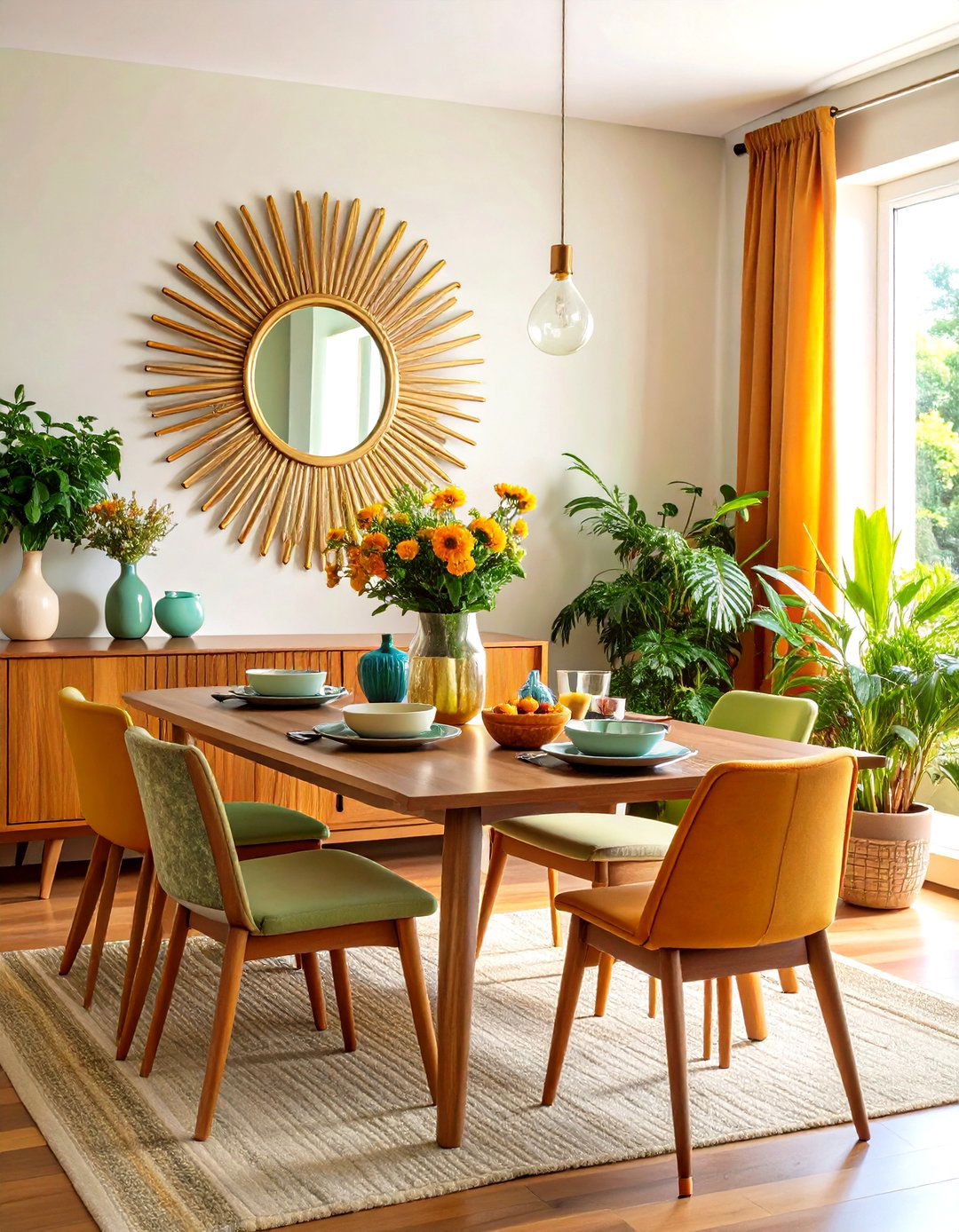
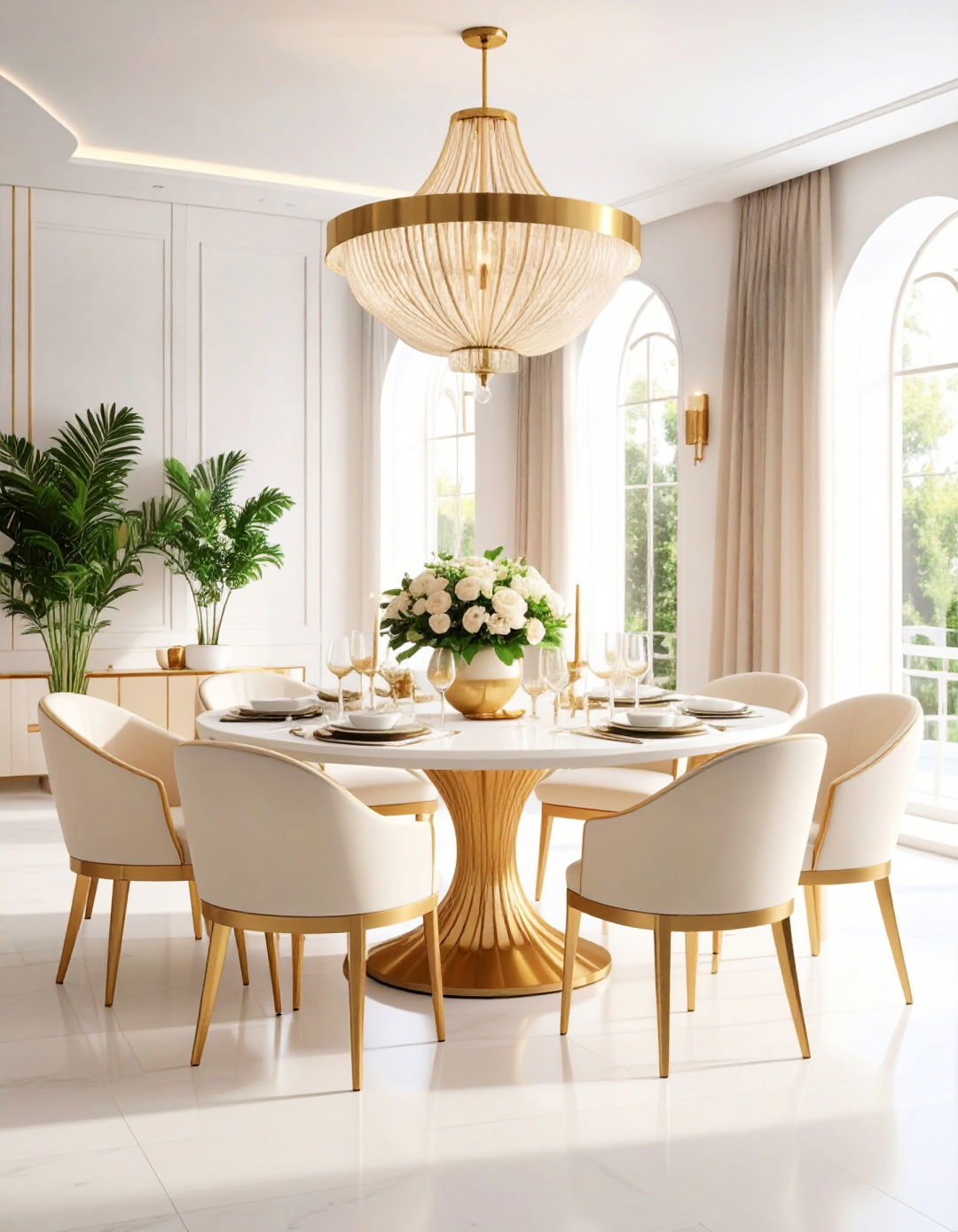
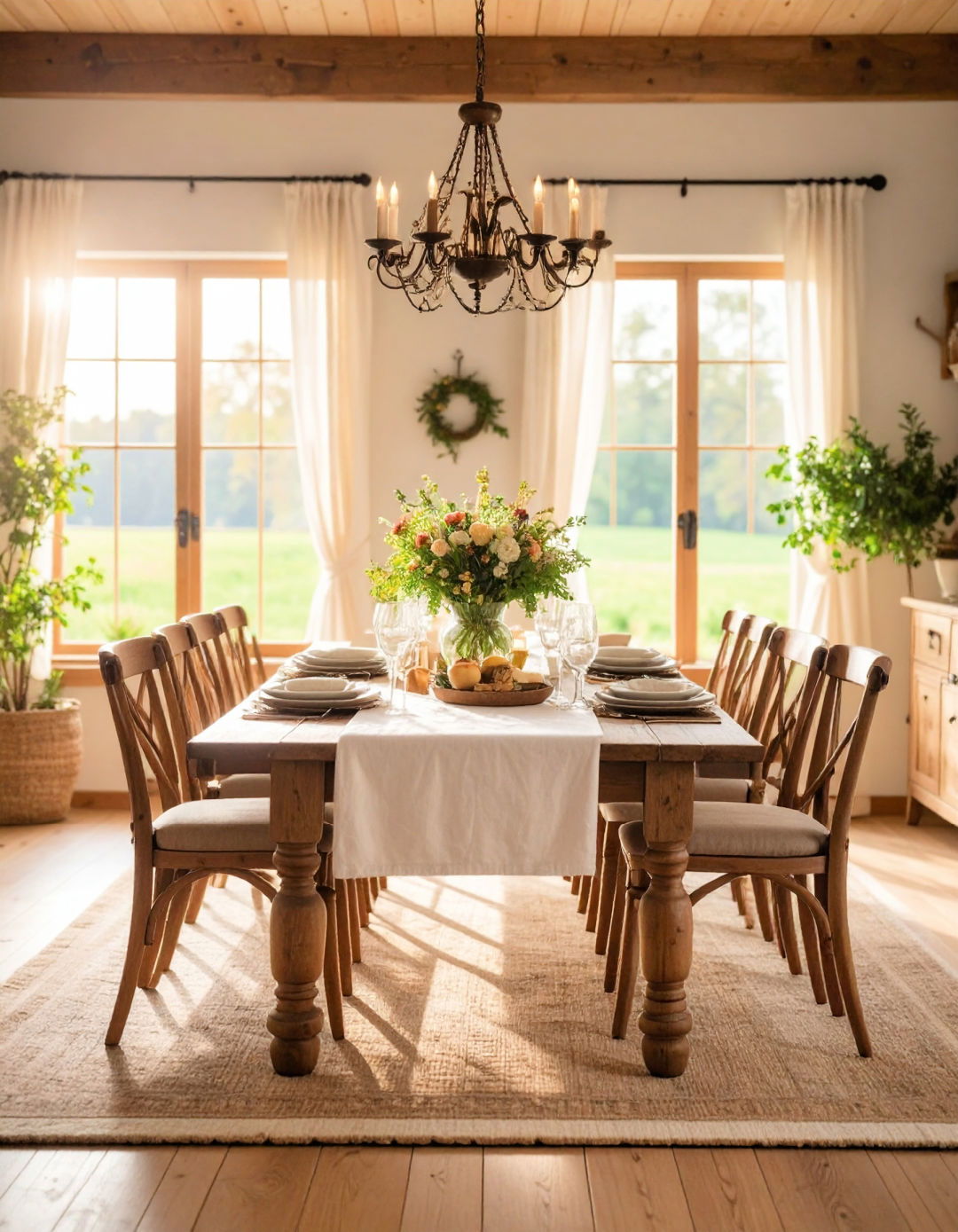
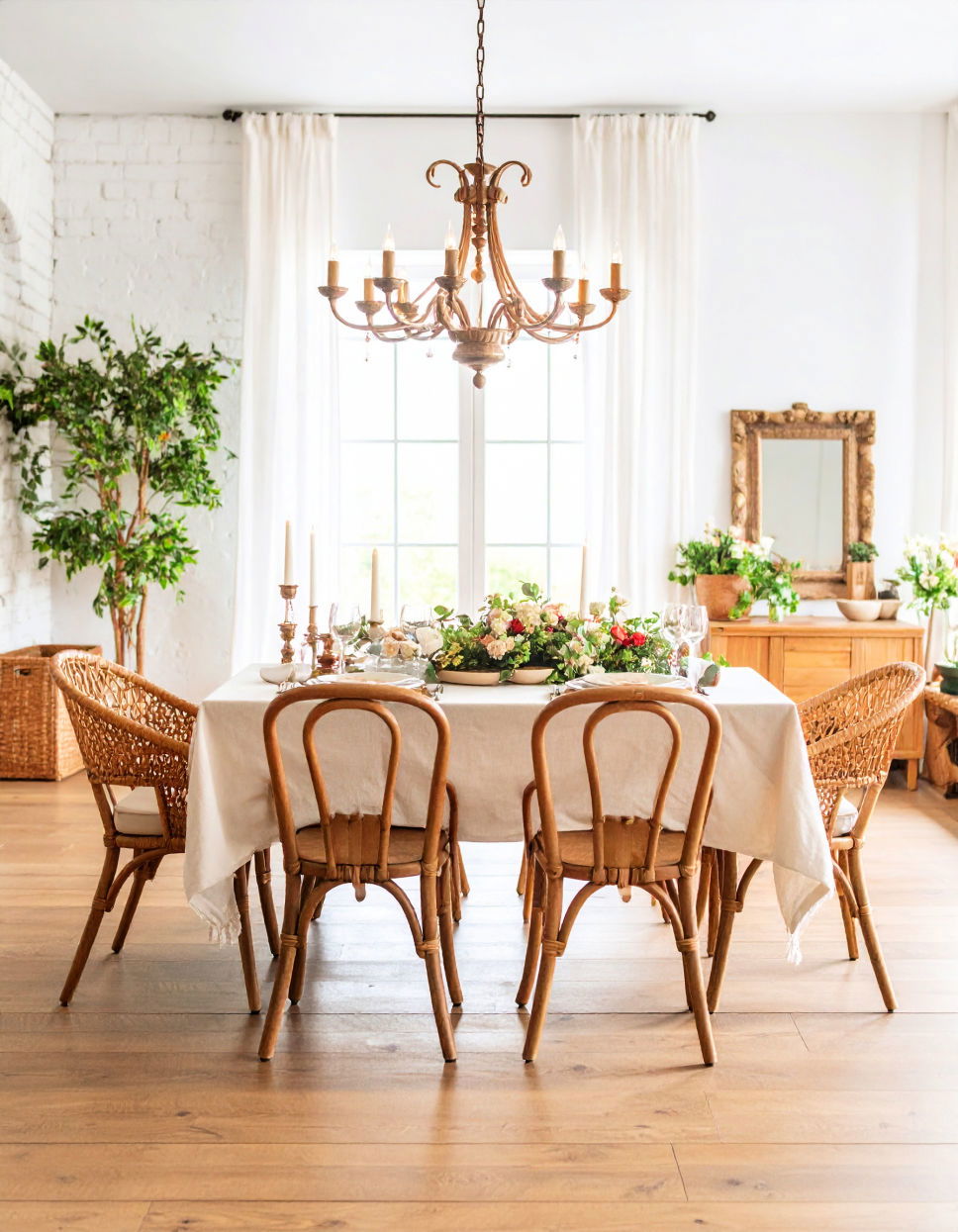

Leave a Reply